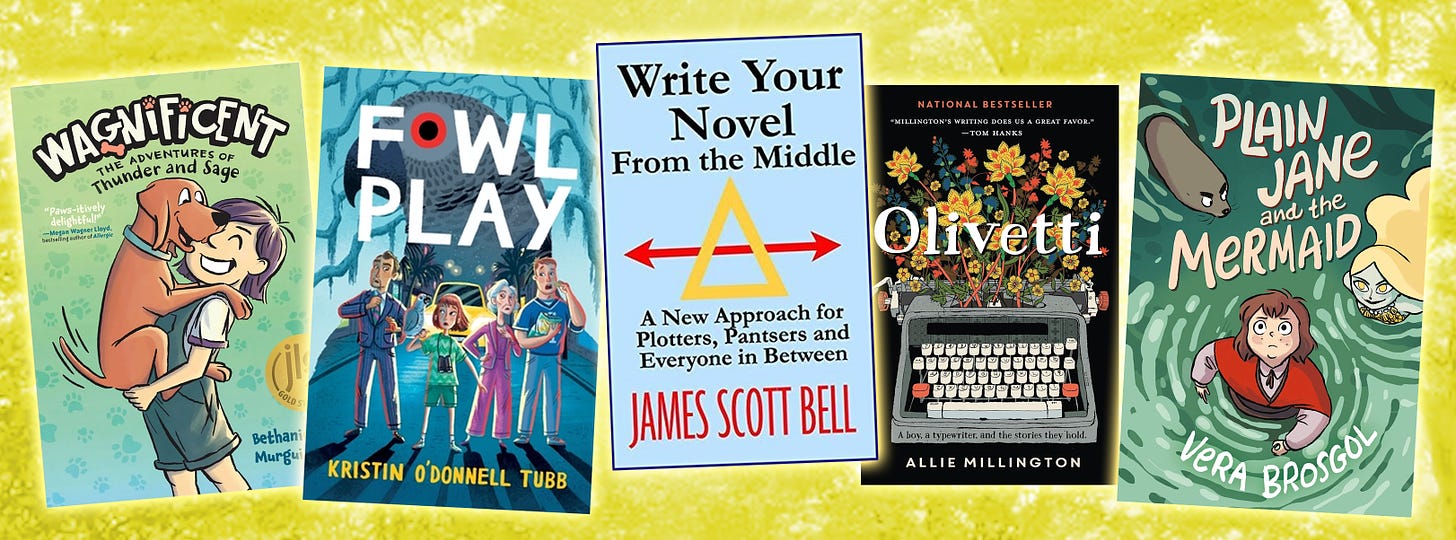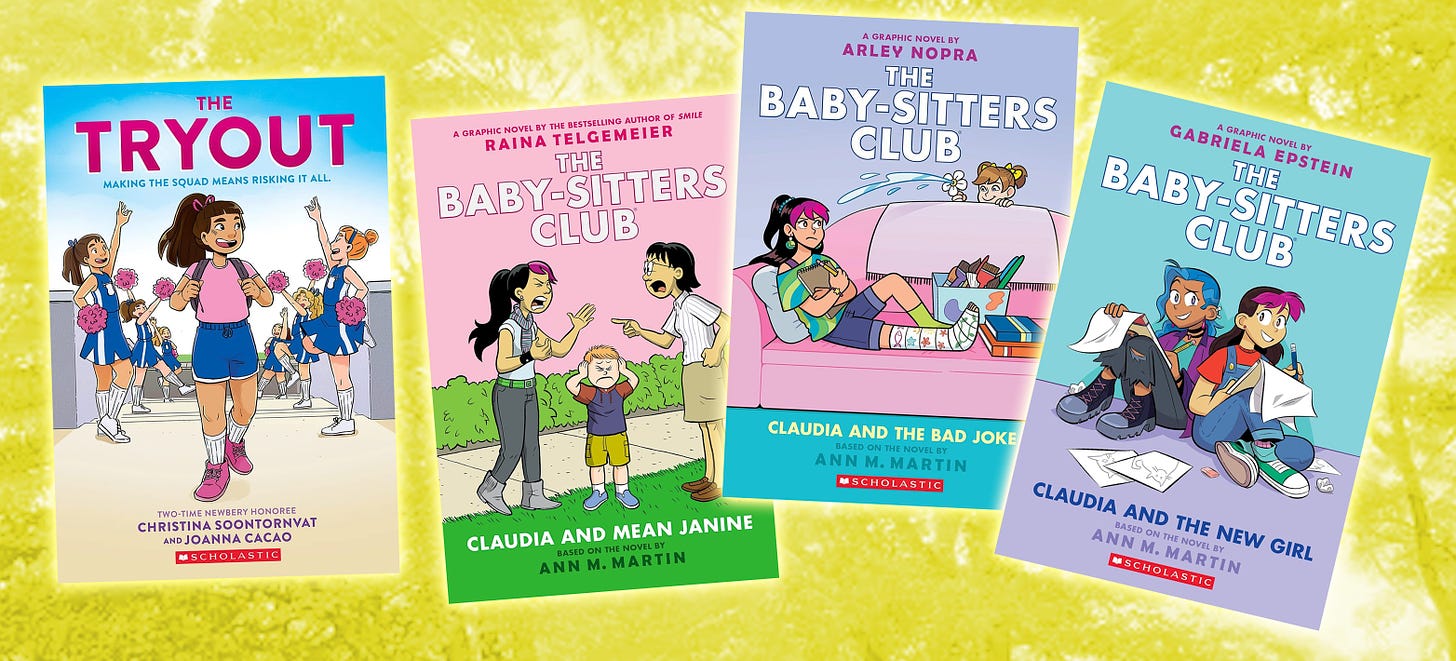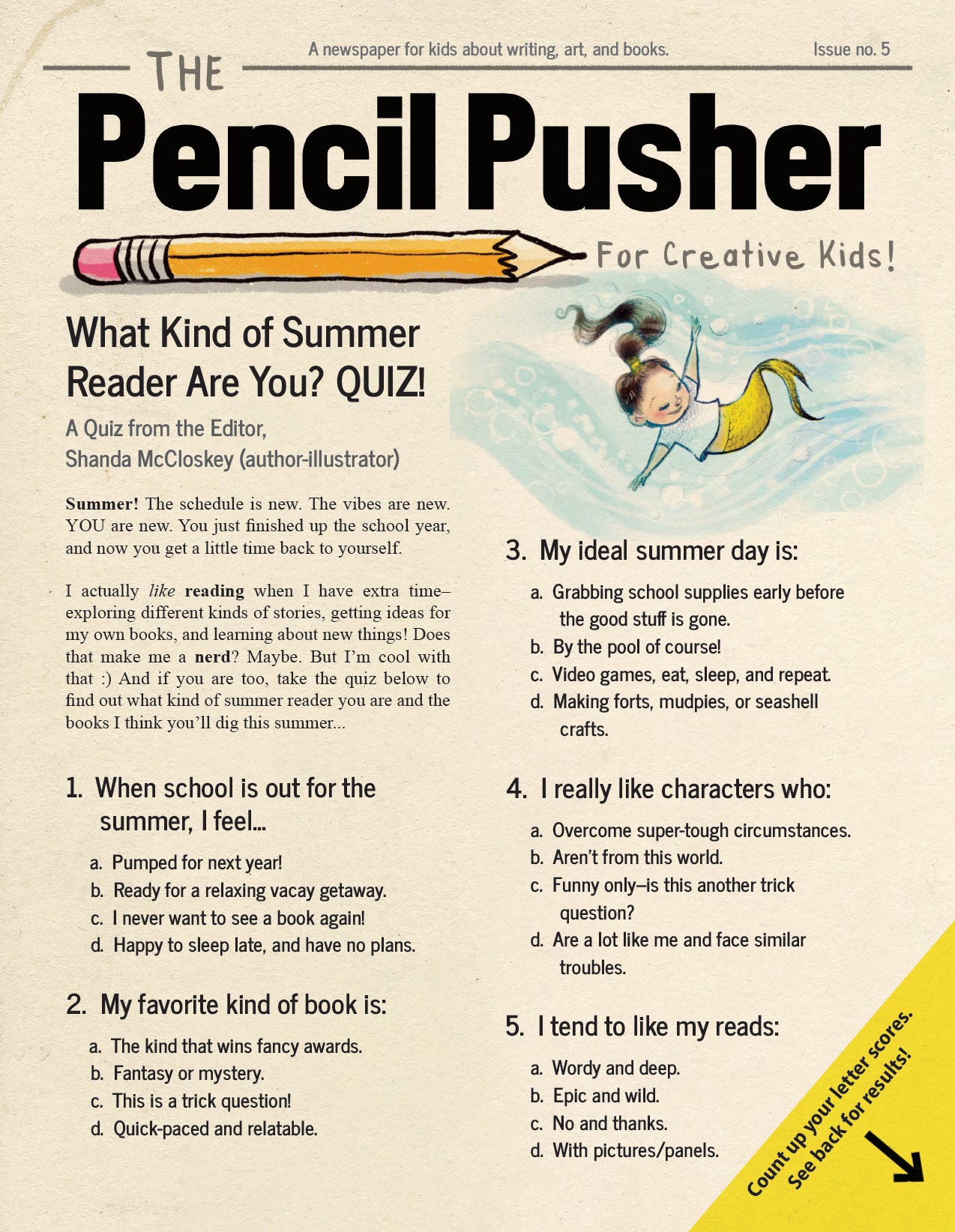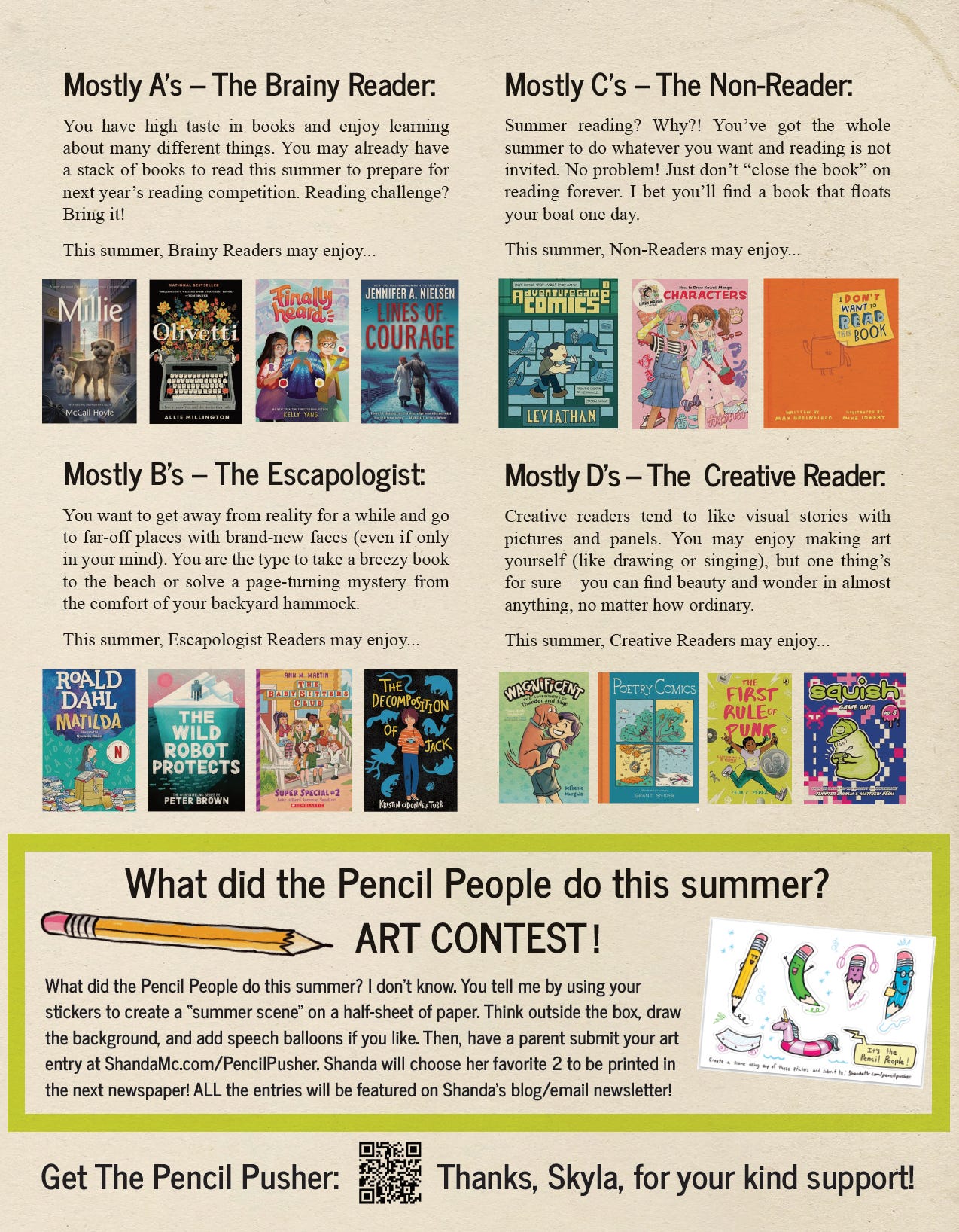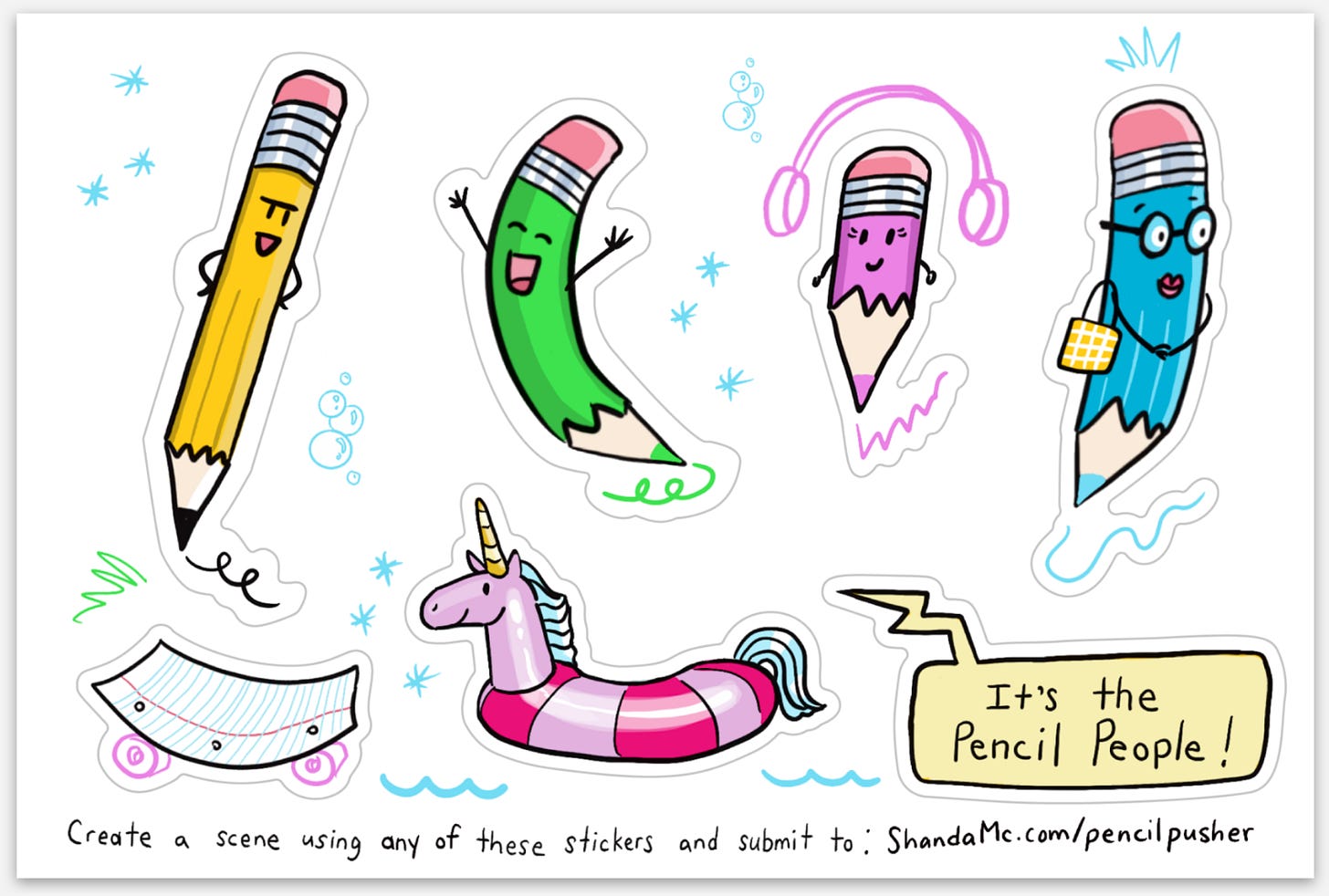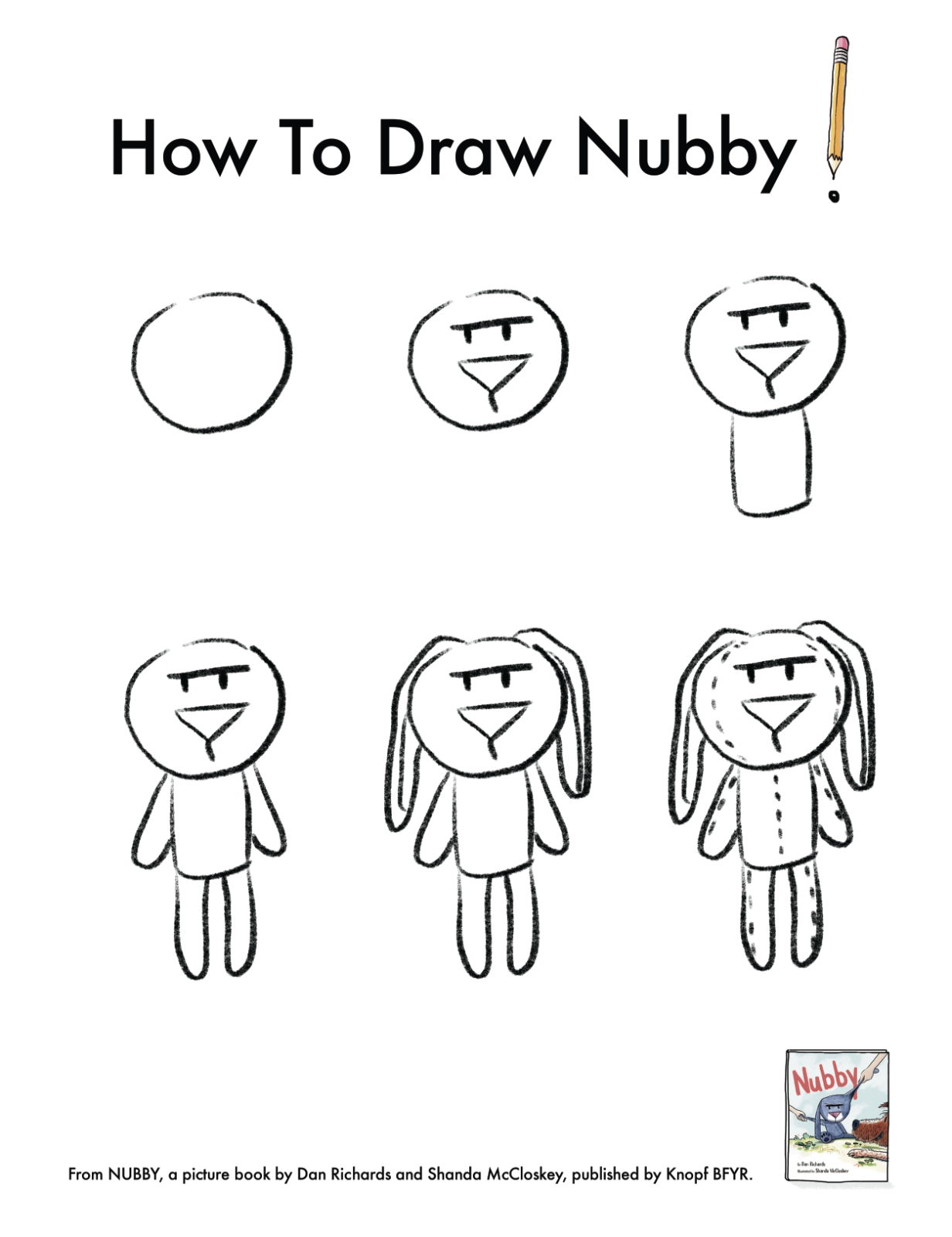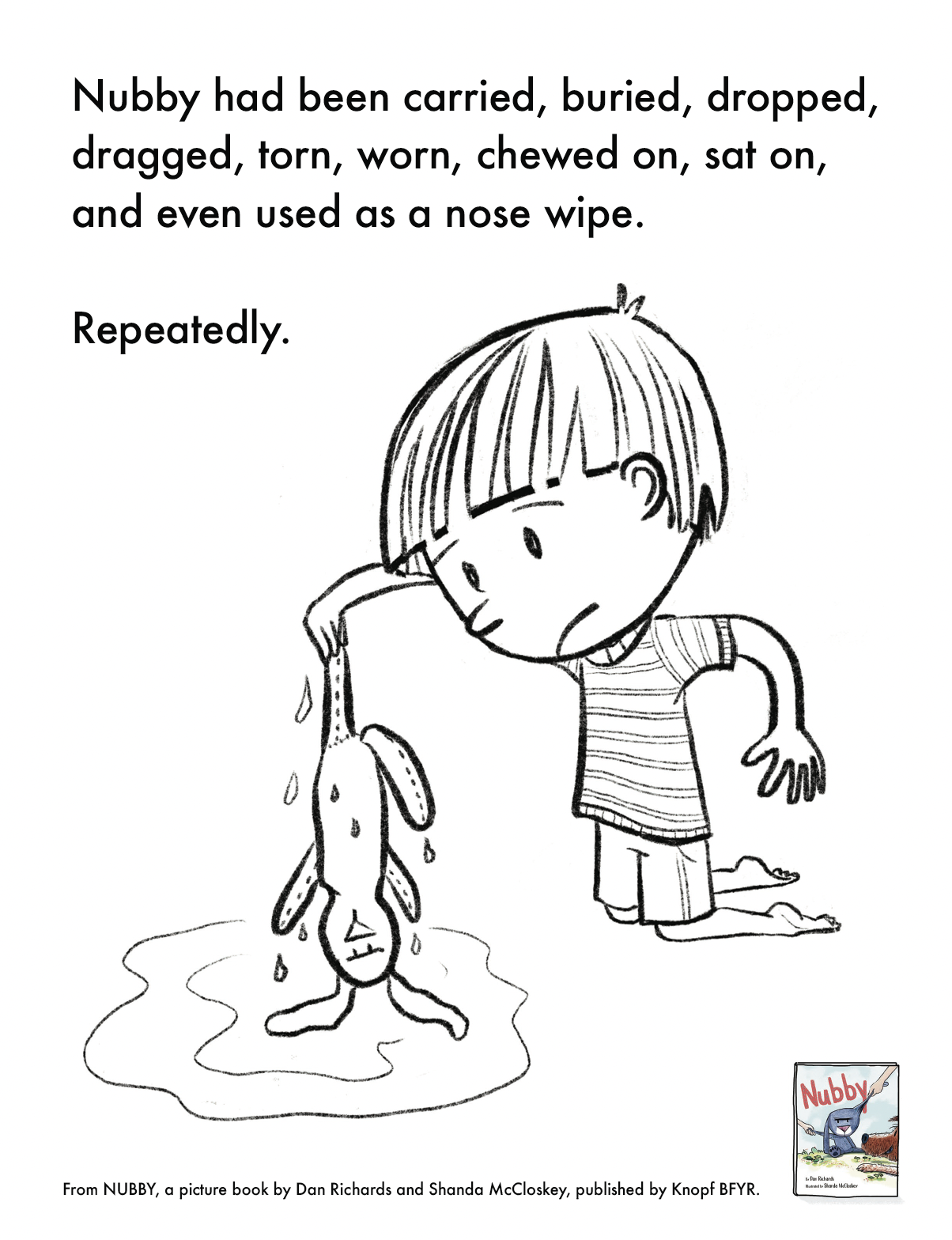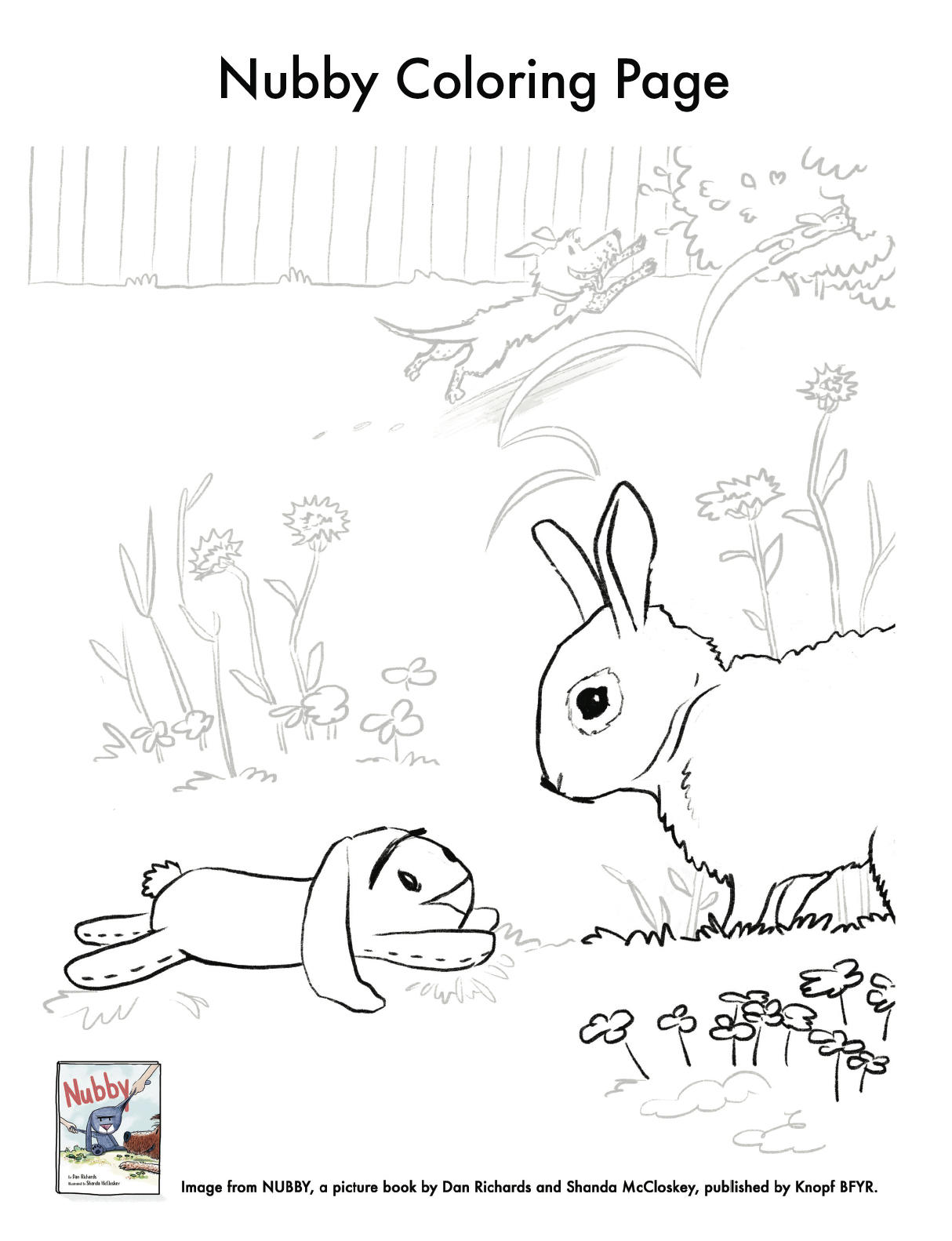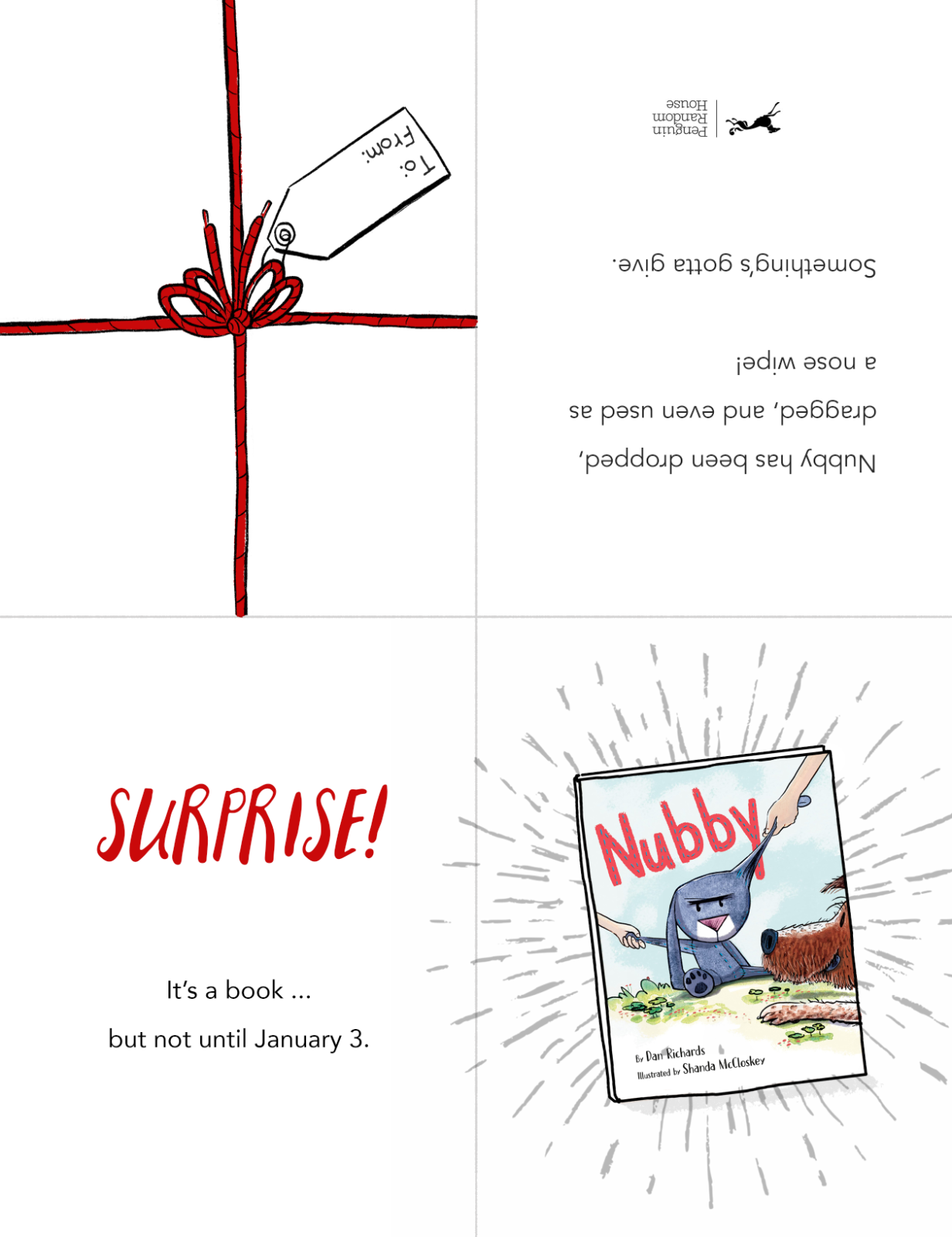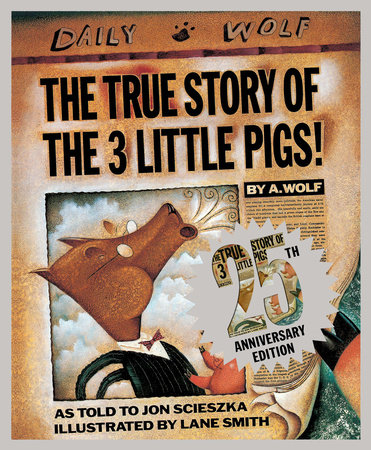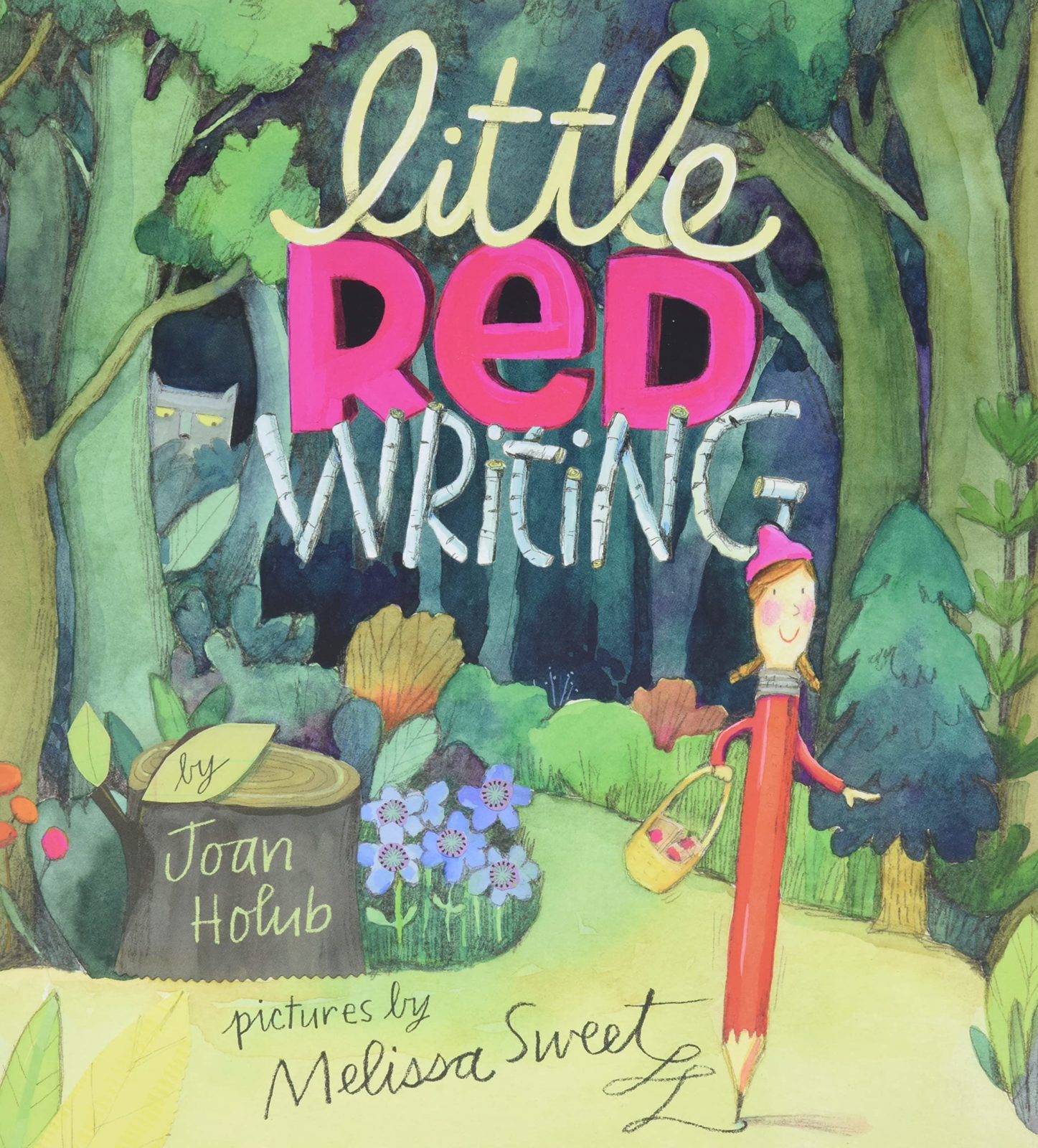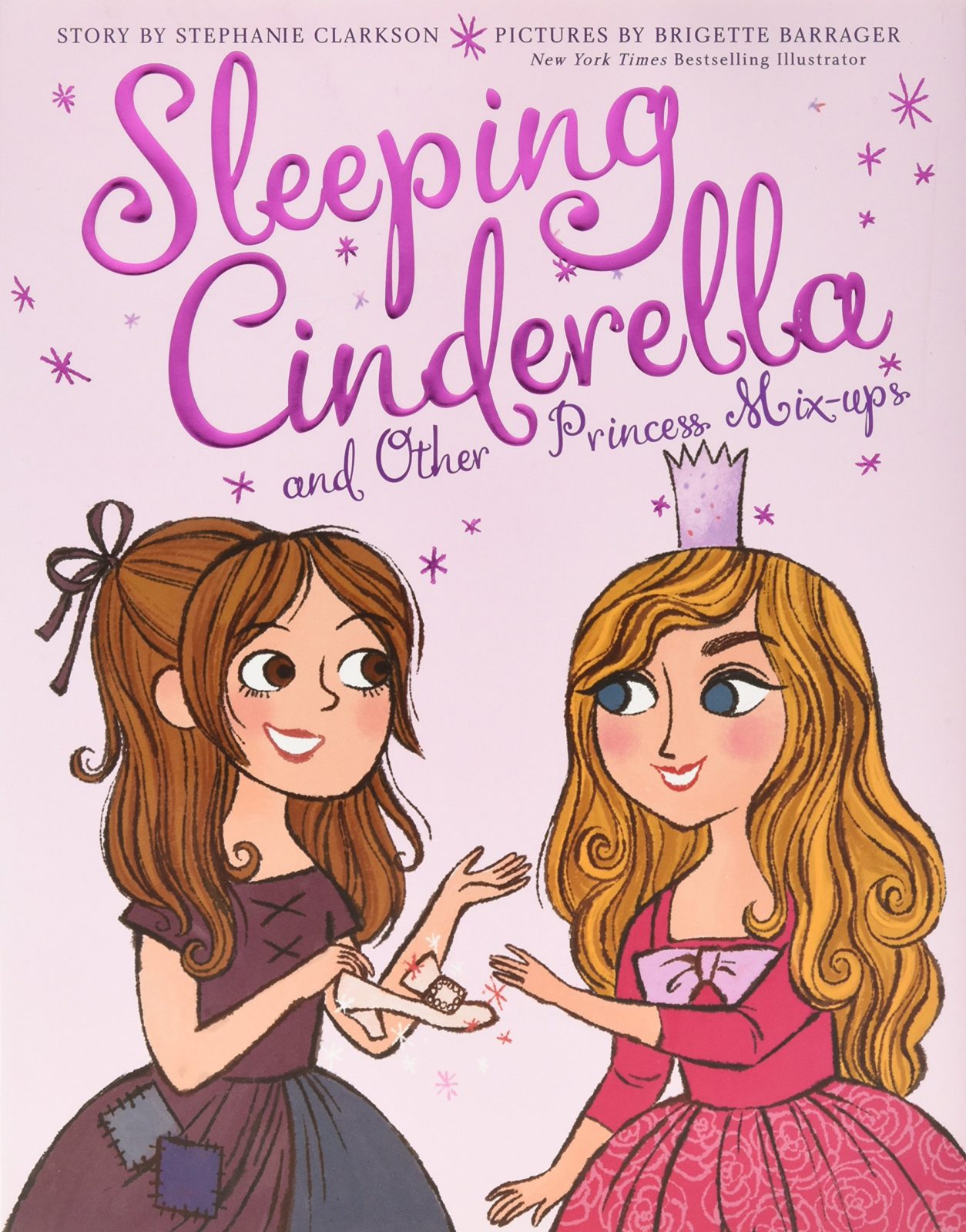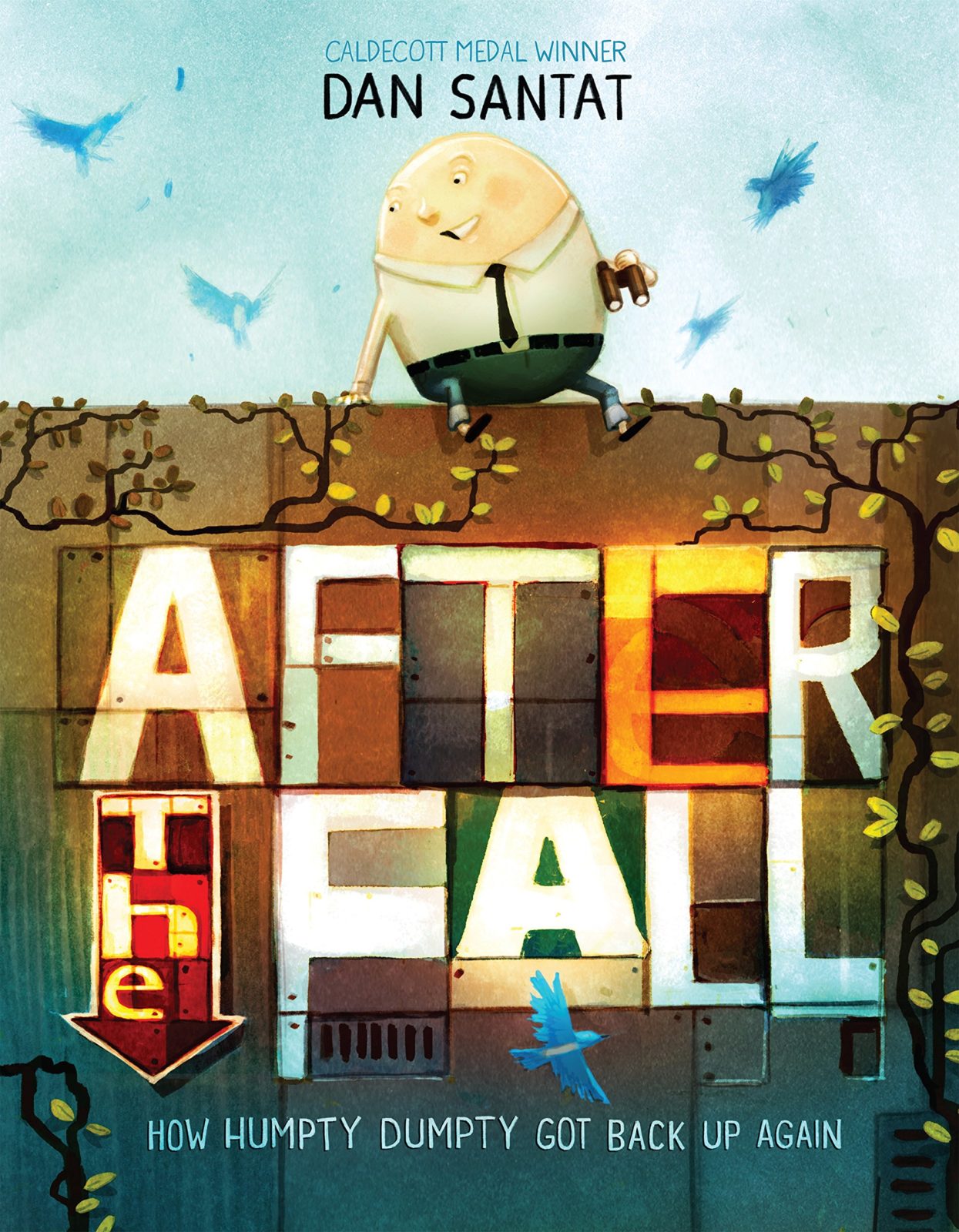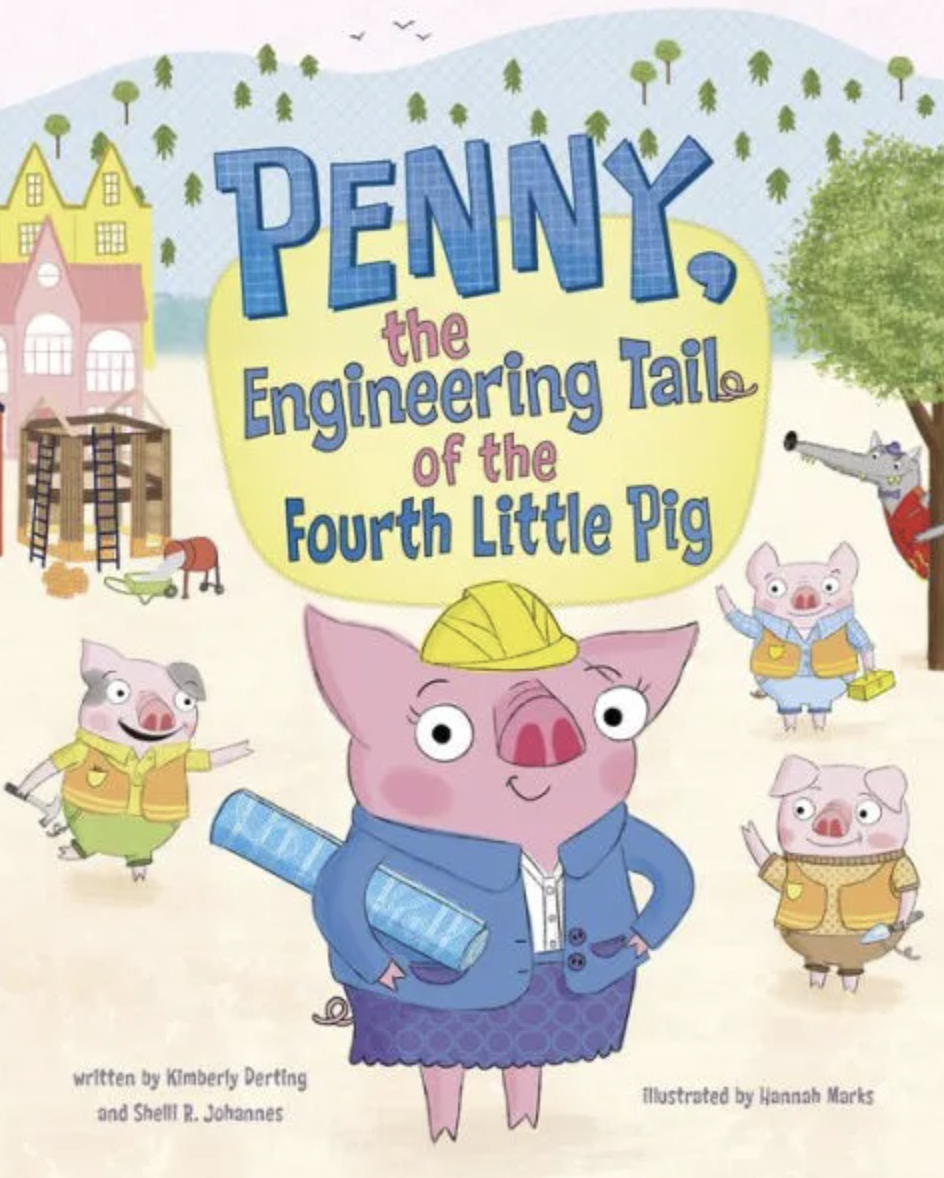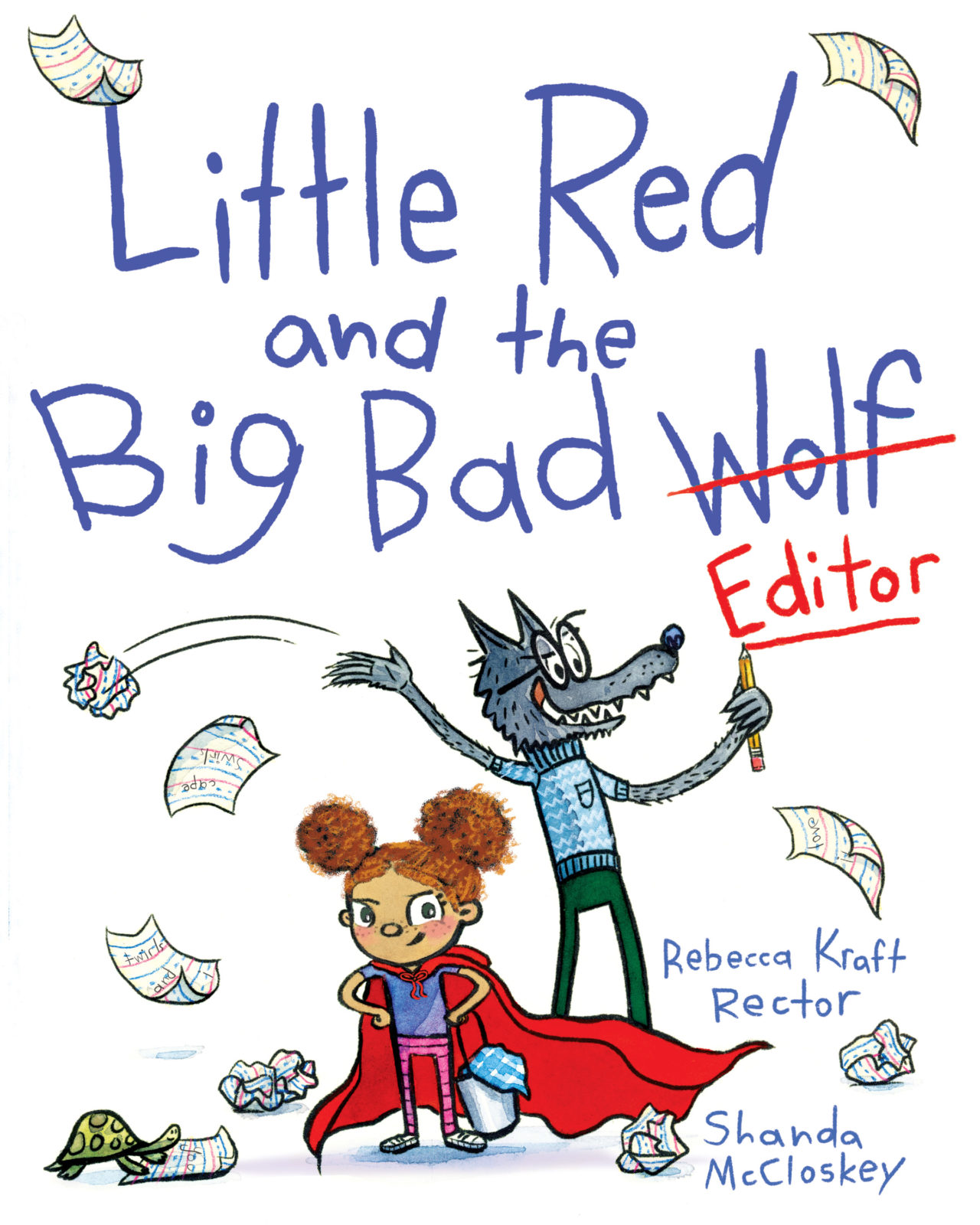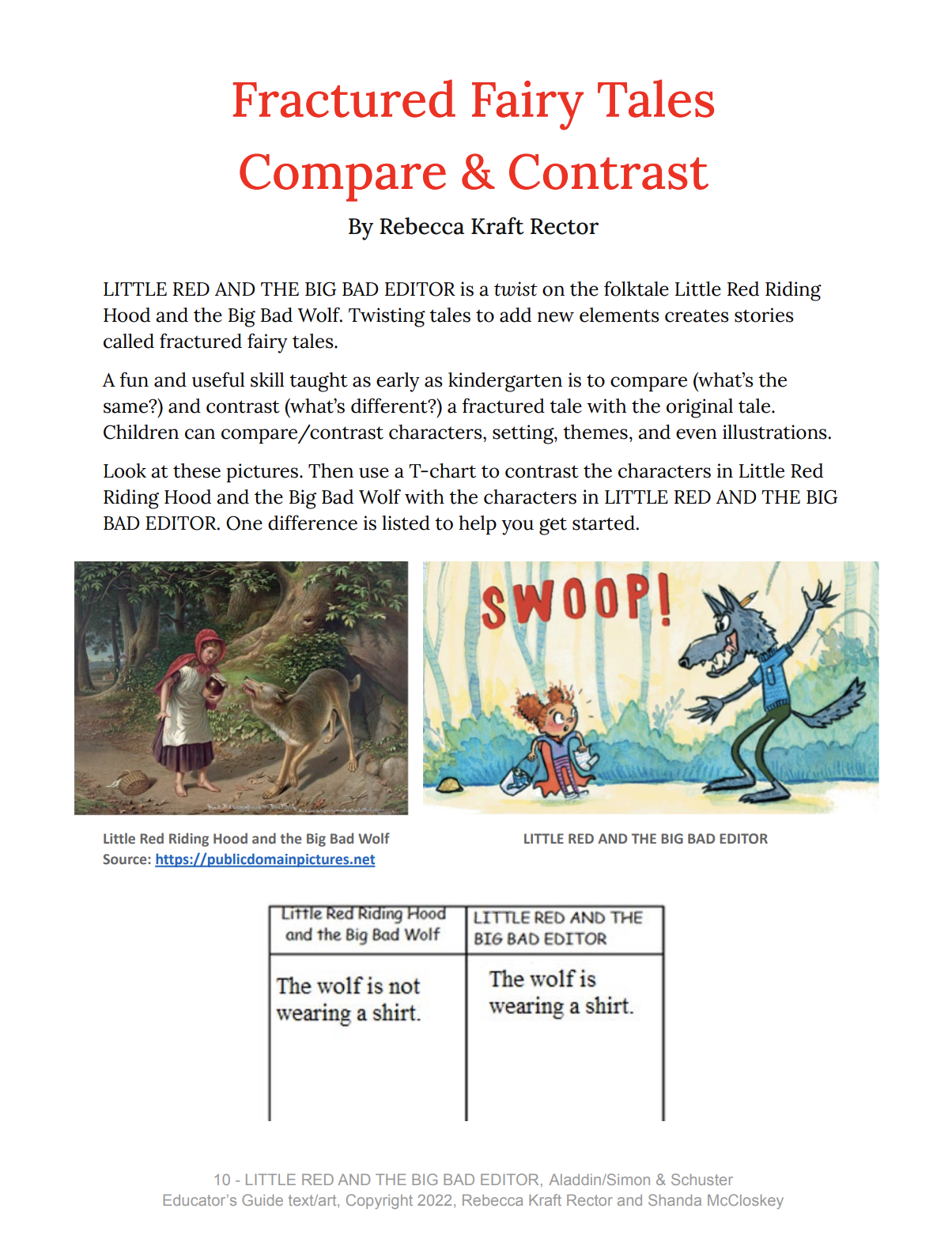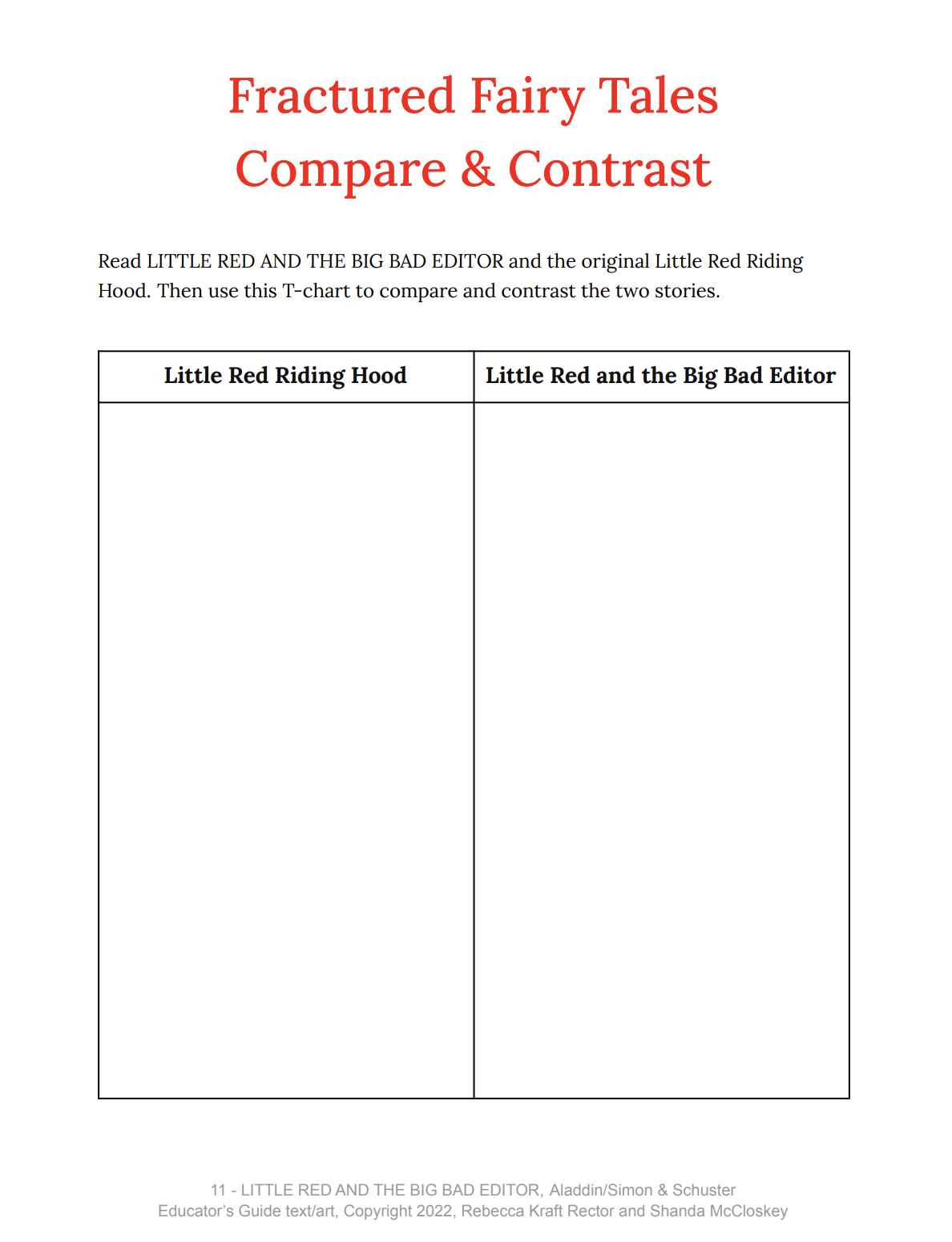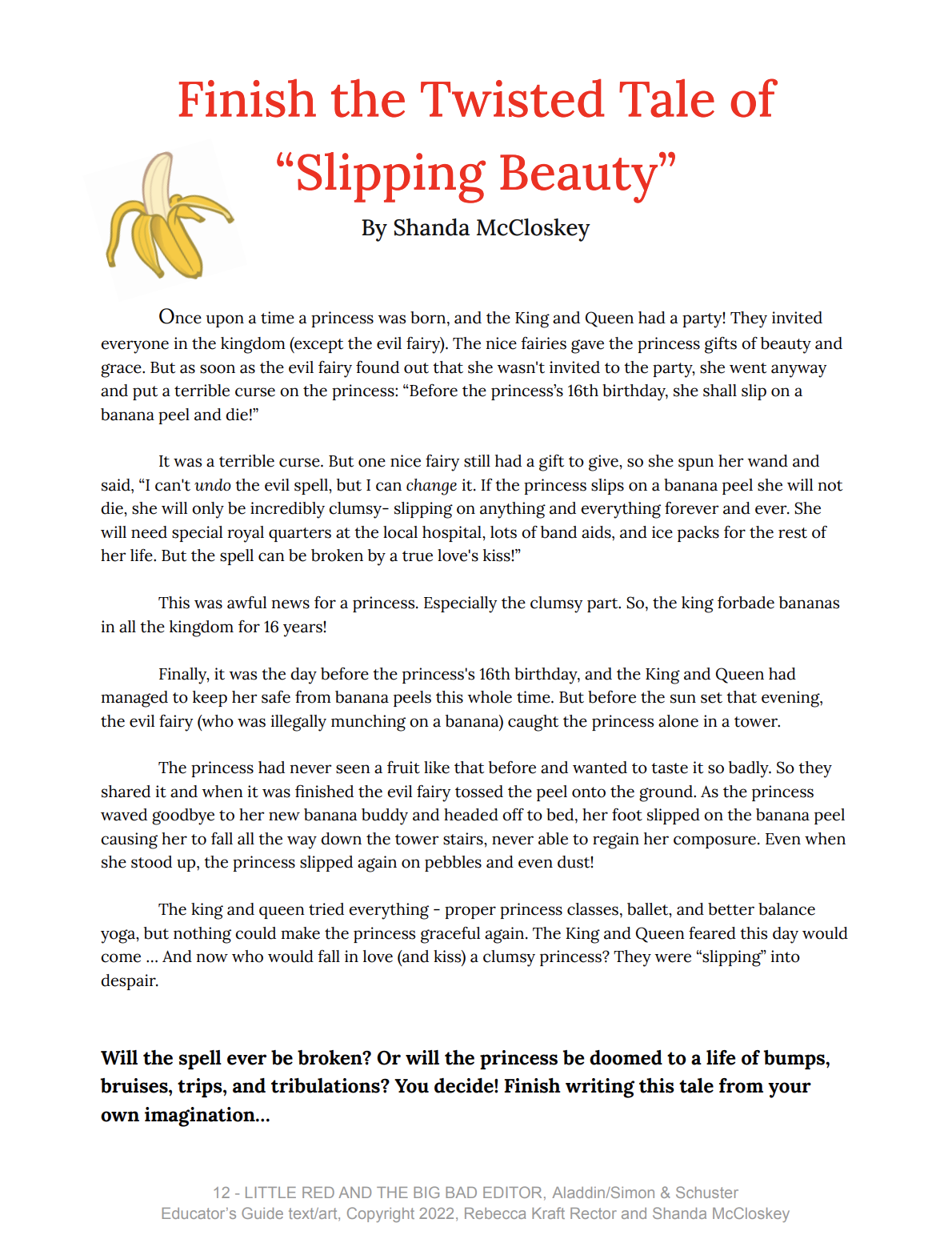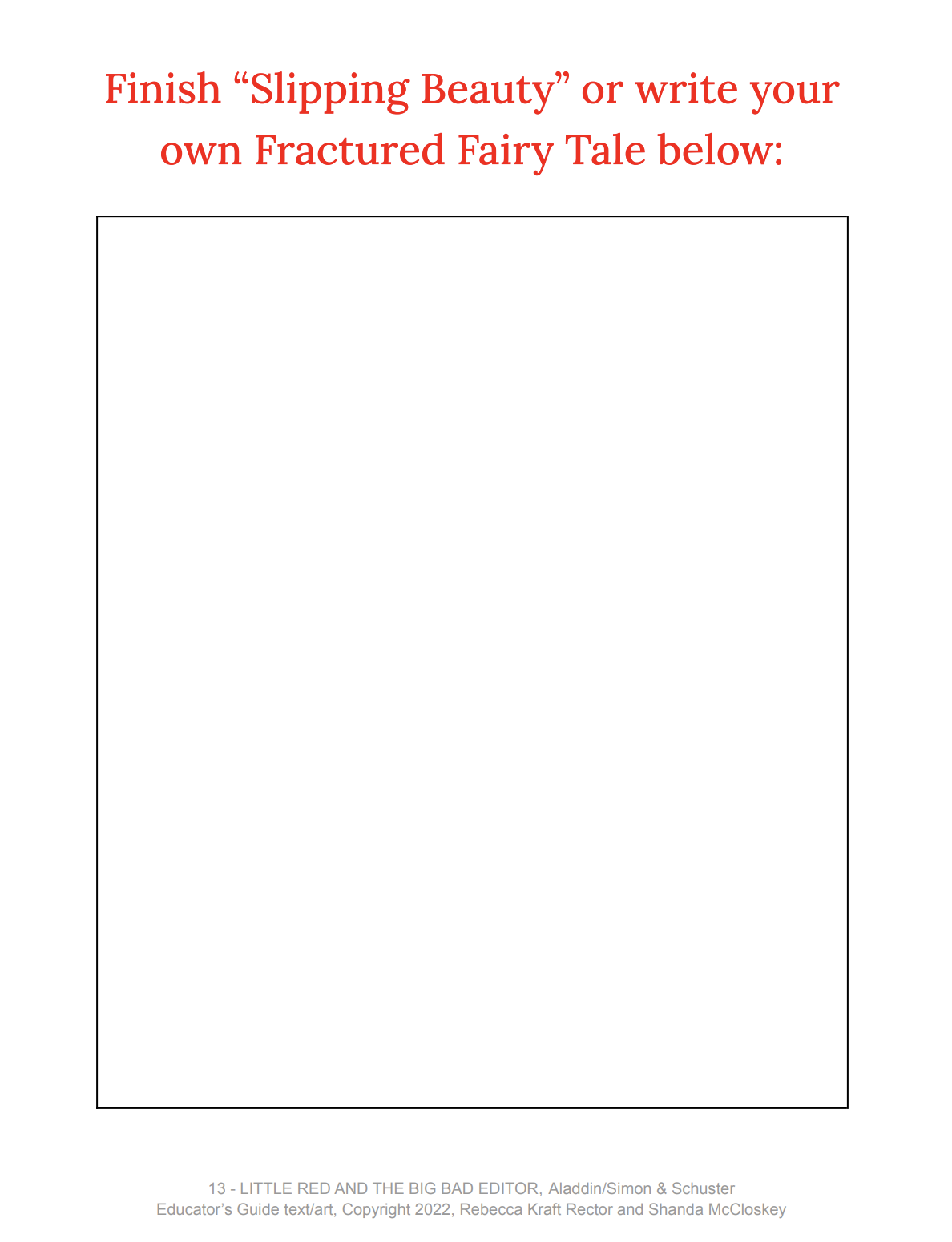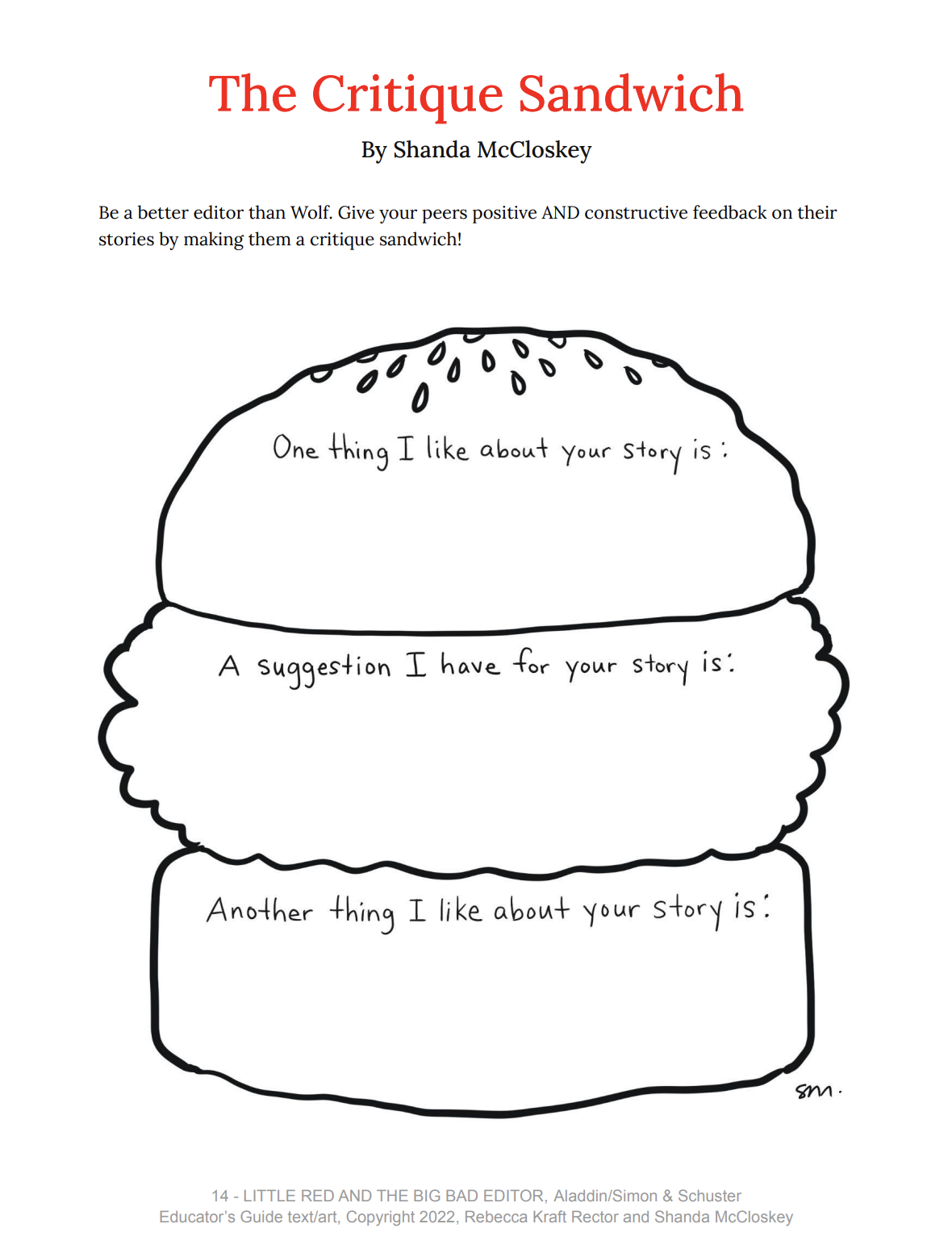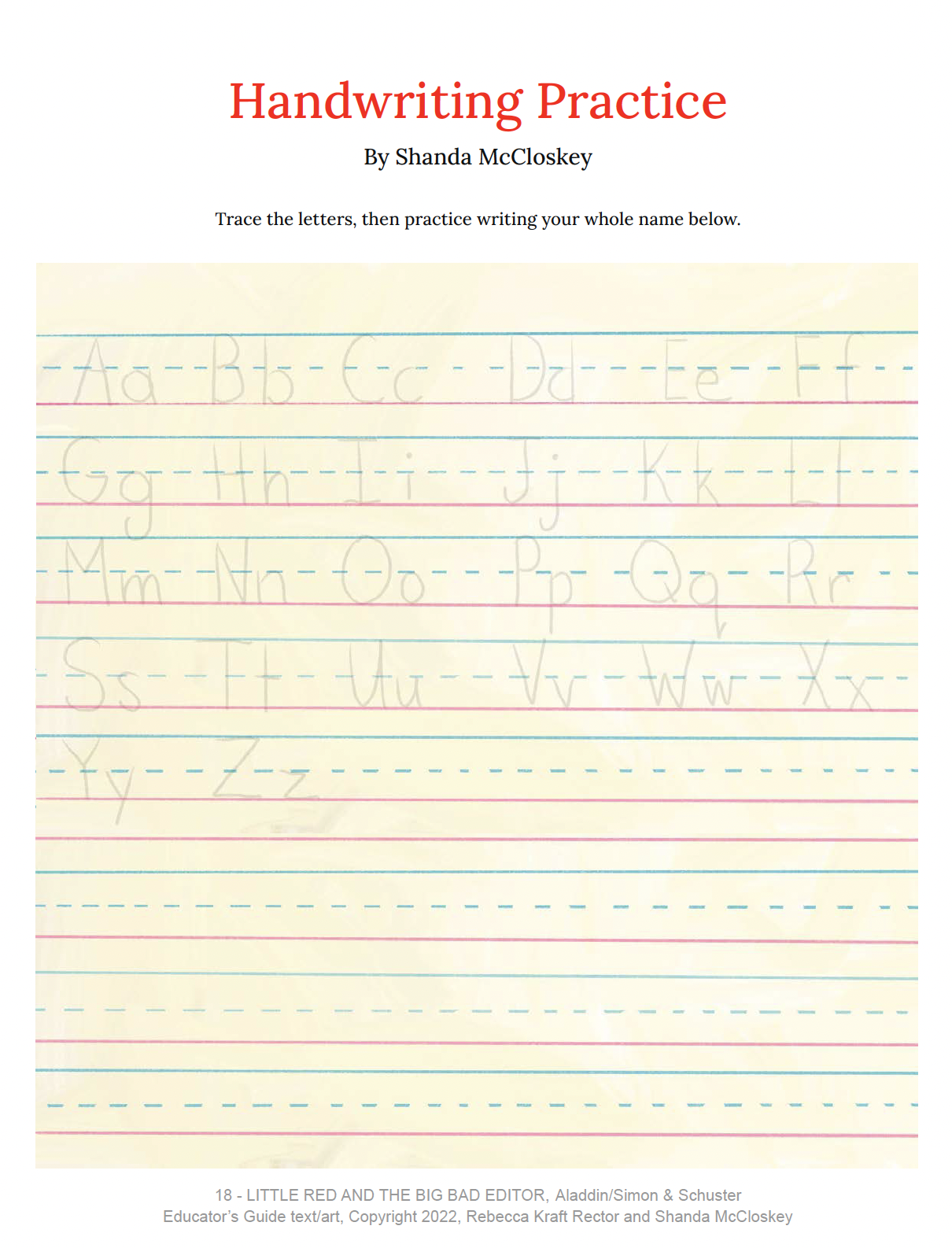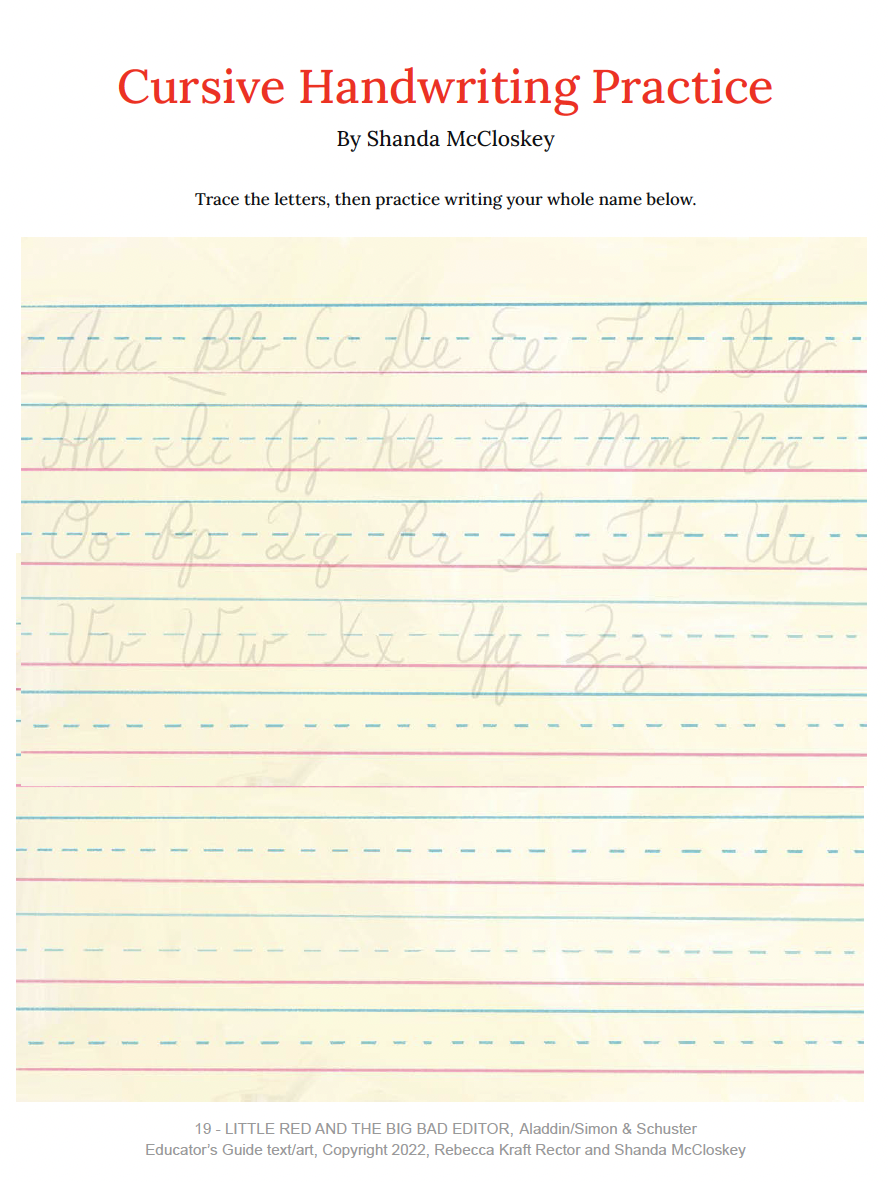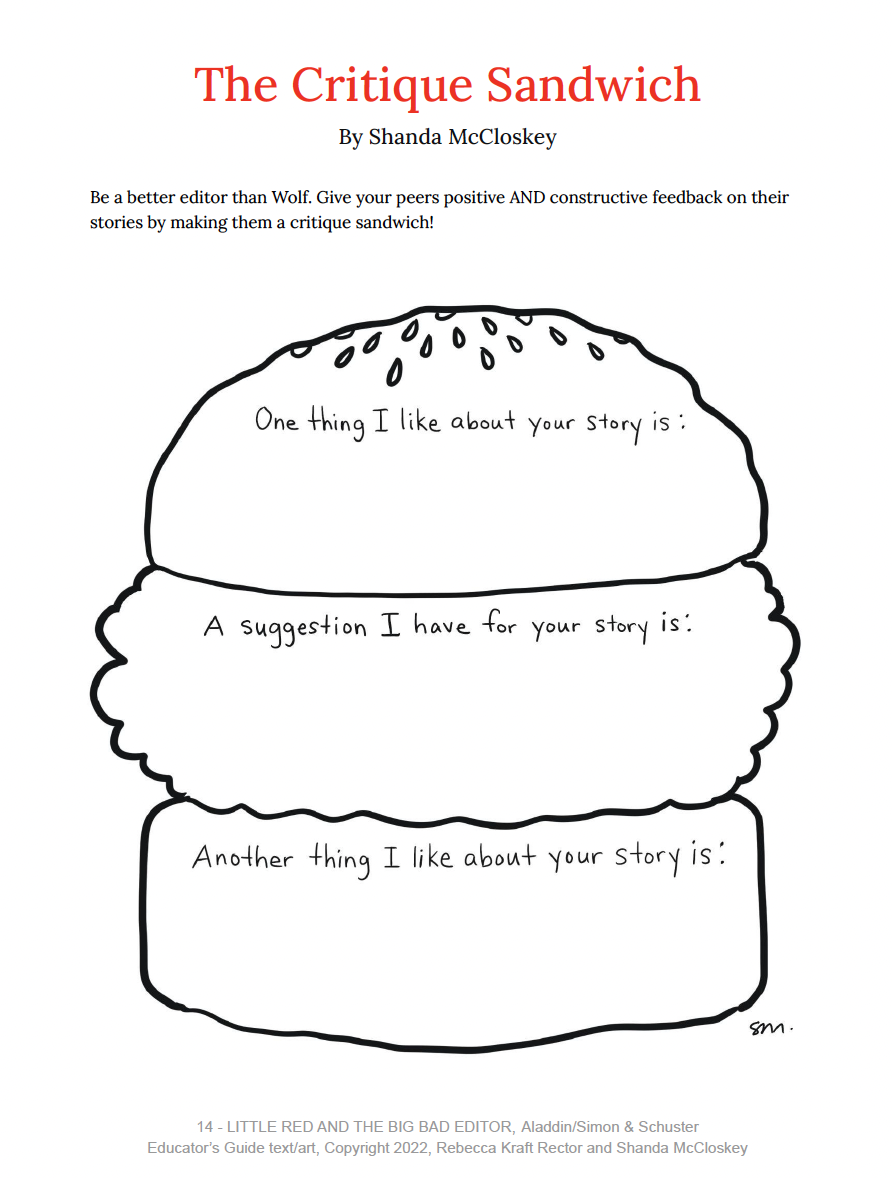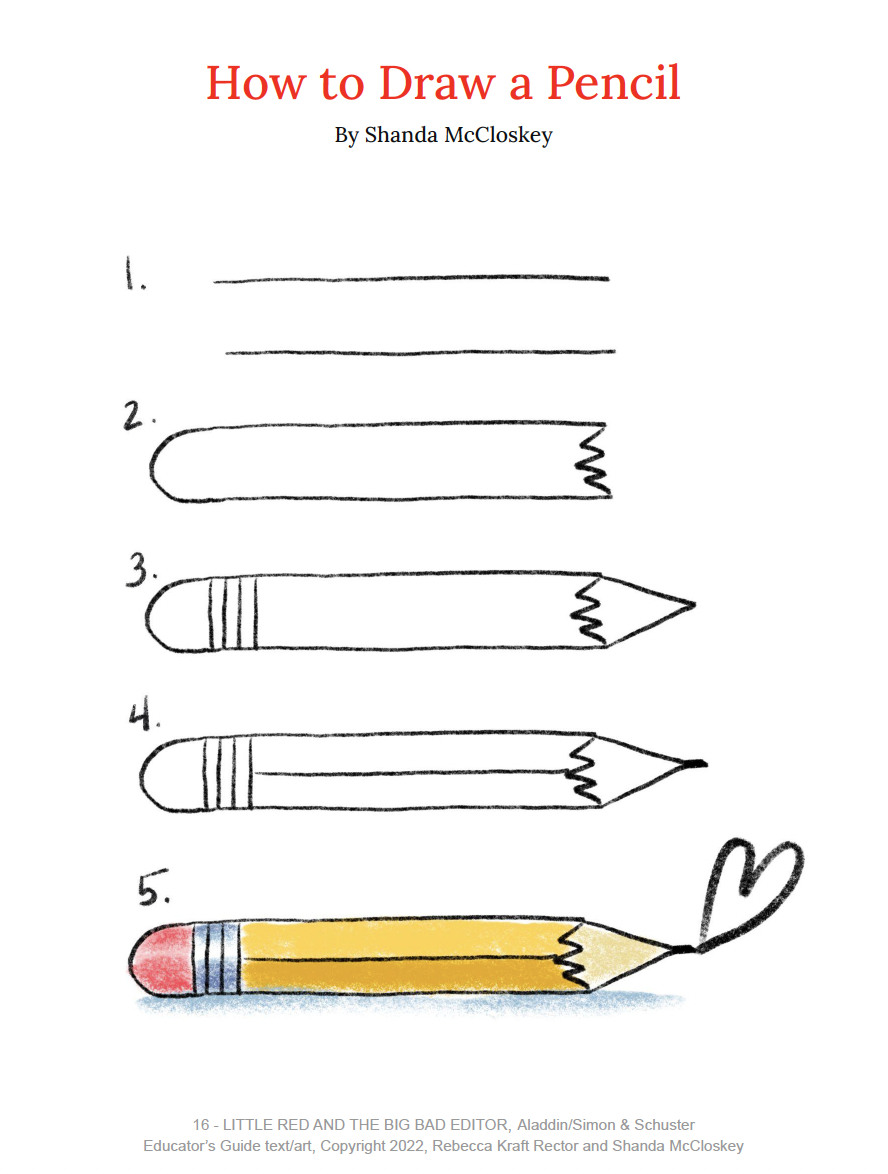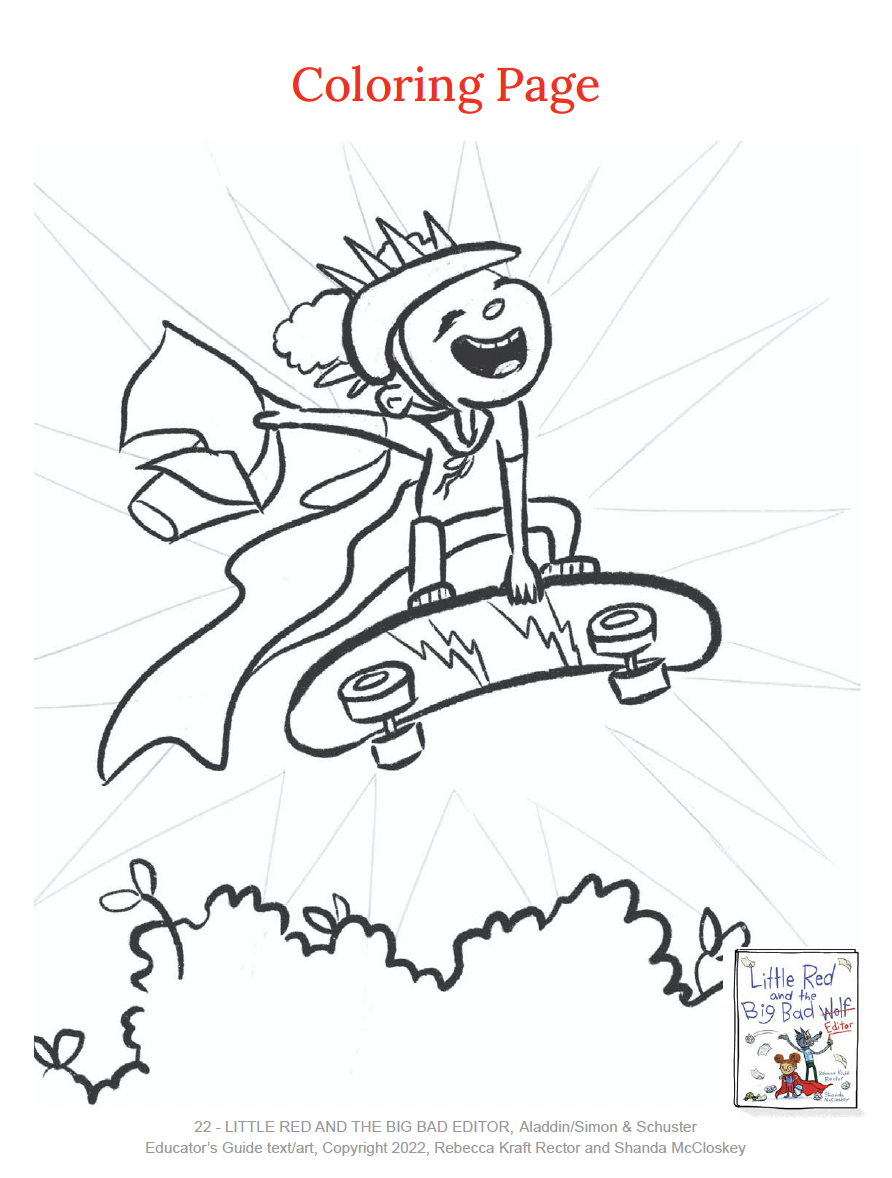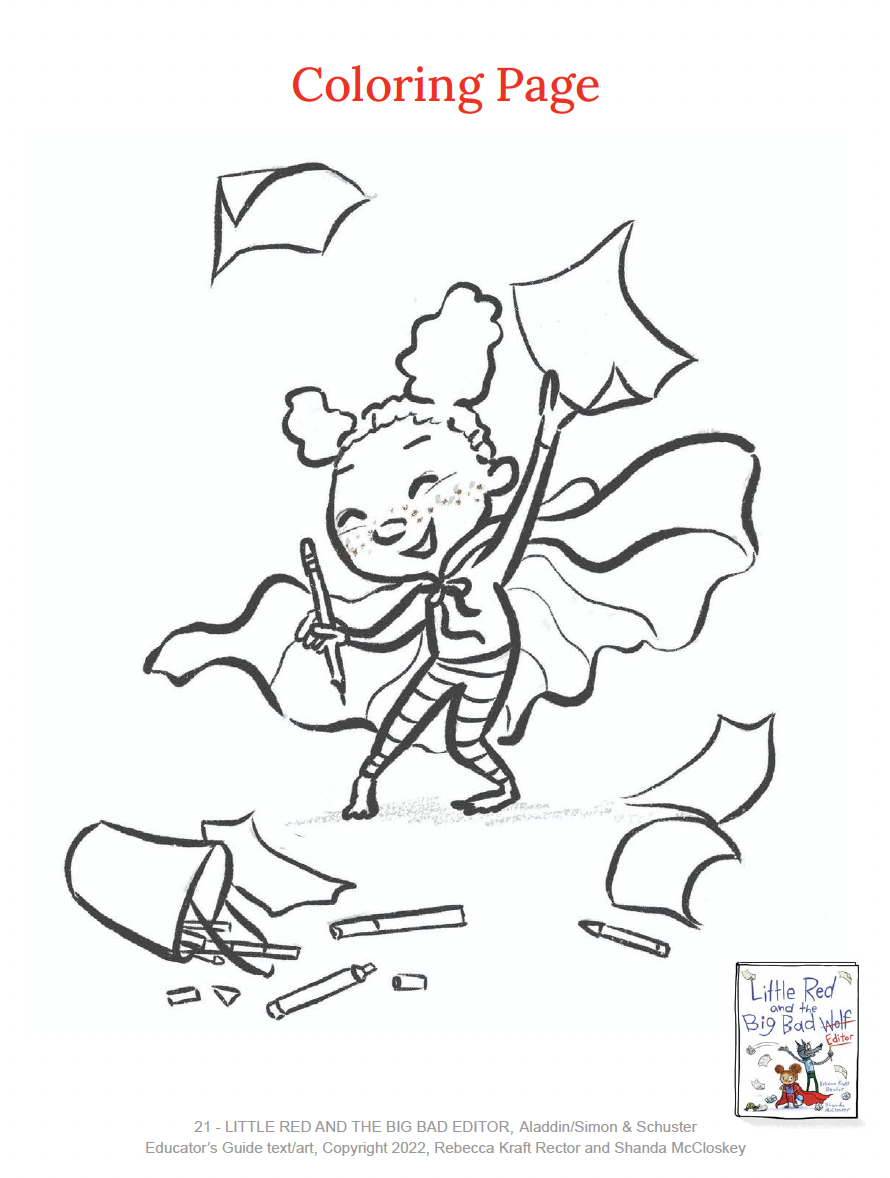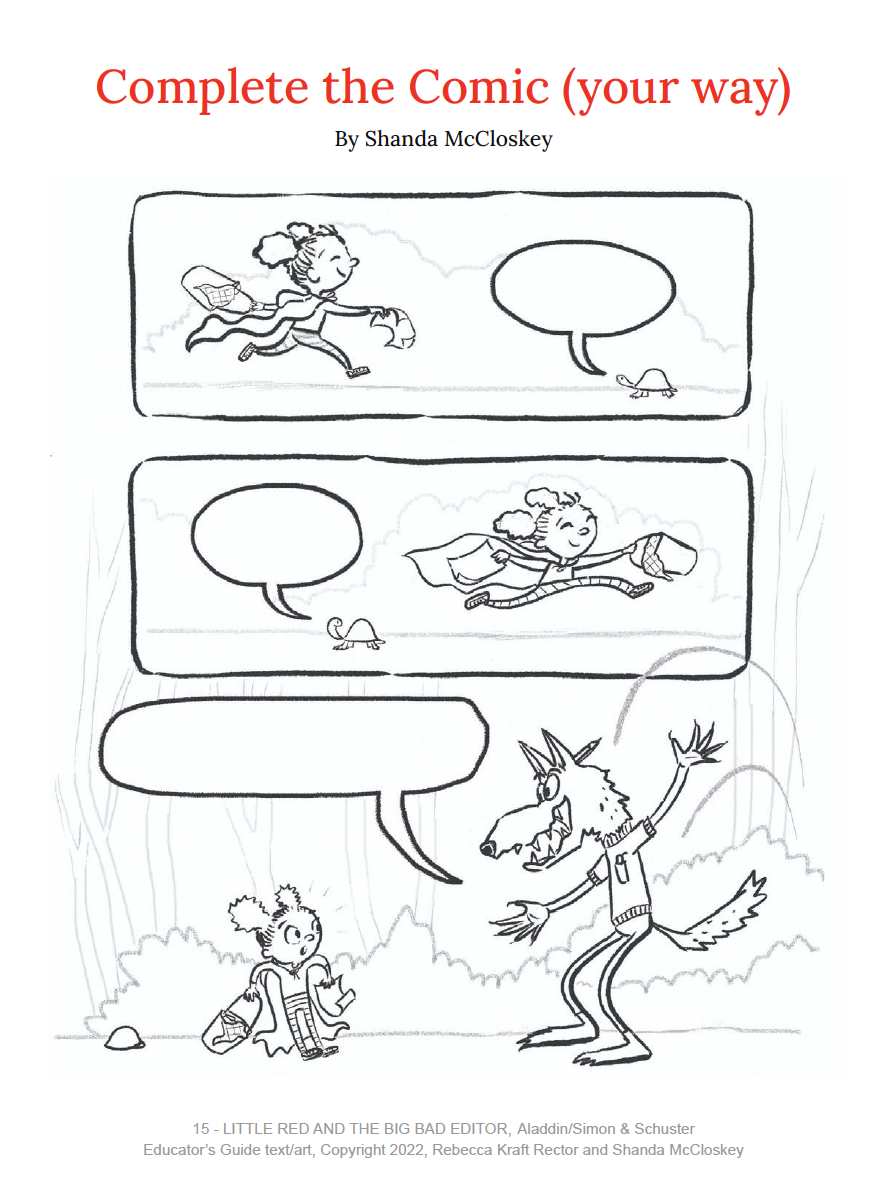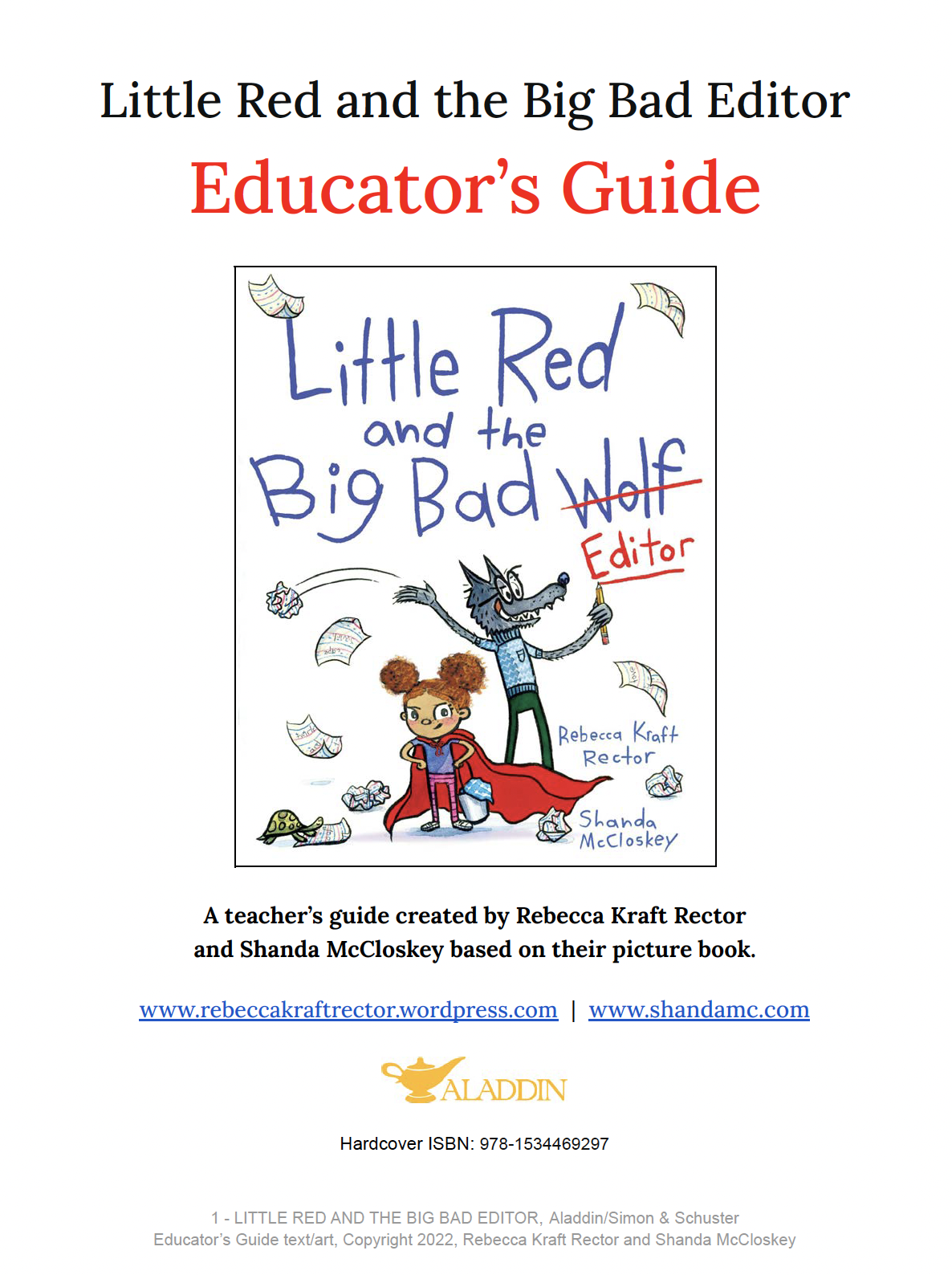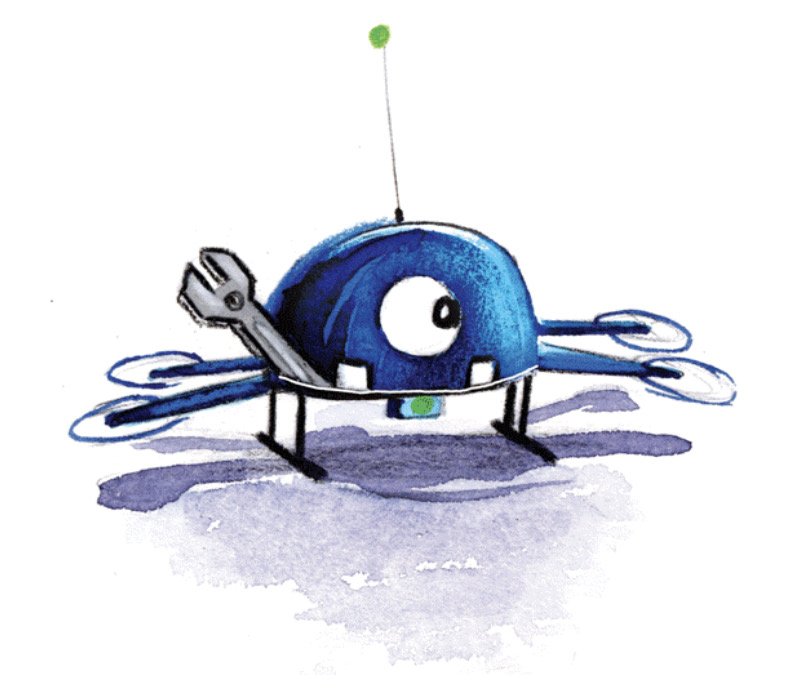Every student can design a piece of the machine!
- Look at the table of contents inside the book, SMASH, CRASH, TOPPLE, ROLL!: The Inventive Rube Goldberg, for inspiration! It stretches over 4 pages that all connect into one long chain reaction machine! All the parts use versions of the 6 simple machines and/or some imaginary components (such as a ghost or a monkey holding bananas in just the right place at the right time)!
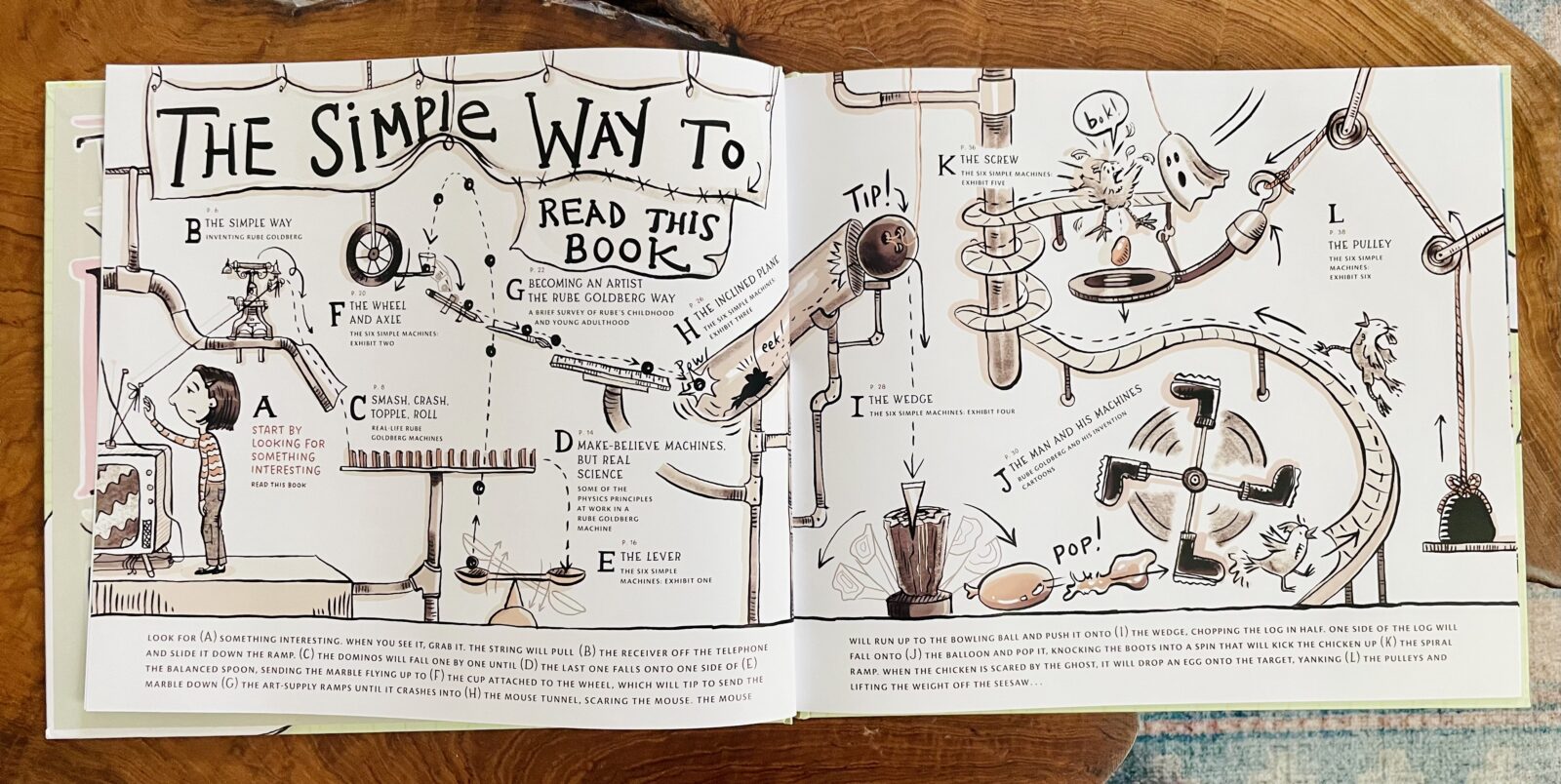
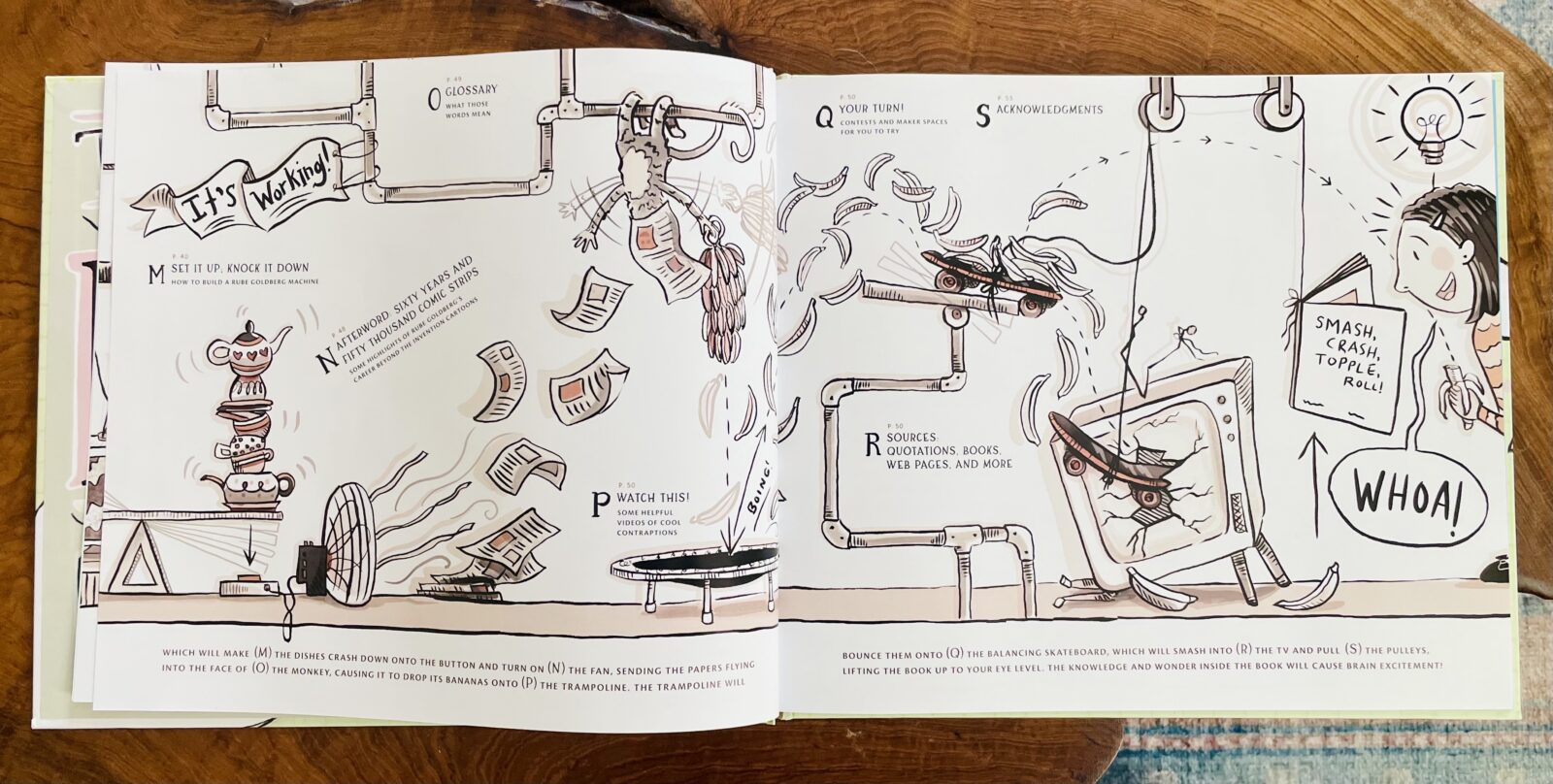
2. As a group/class decide what simple task your machine (as a whole) will accomplish. Will it sweep the floor, feed the dog, or something else.?
3. Note who will “start” the machine on (page 1). Use this printable as the first page if you like. Then decide who comes next (page 2), and next (page 3), and so on … and the last person “ends” it and shows the completion of the machine’s “task.”
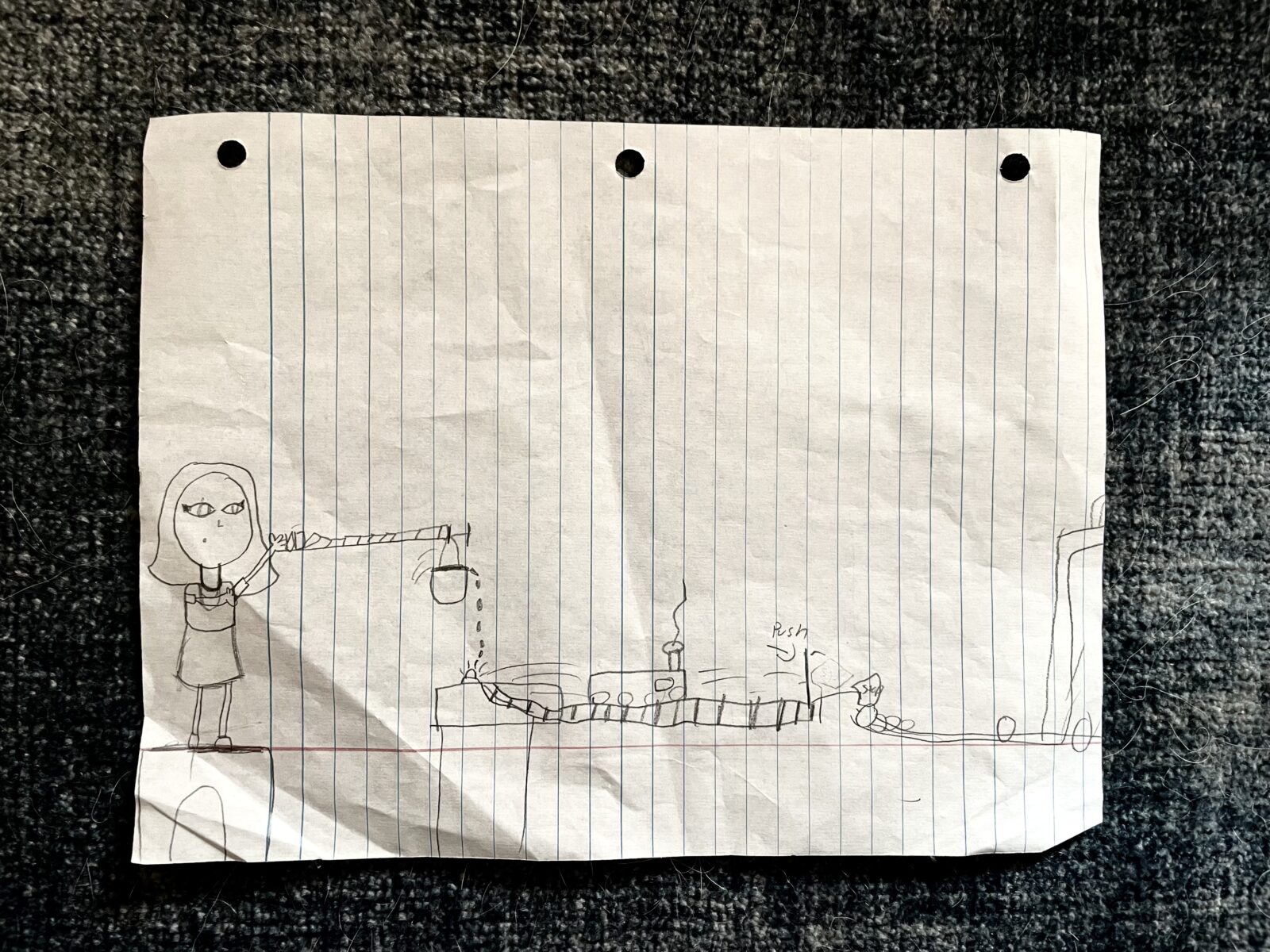
The starter will only connect with someone else’s chain reaction at the right side of their paper. And the finisher will only connect at the left side of their paper. All the other in-betweens will connect their chain reactions at the left AND right sides of their paper.
4. Work together with your adjacent peers to properly “connect” your machines at the correct places as you plan and draw.
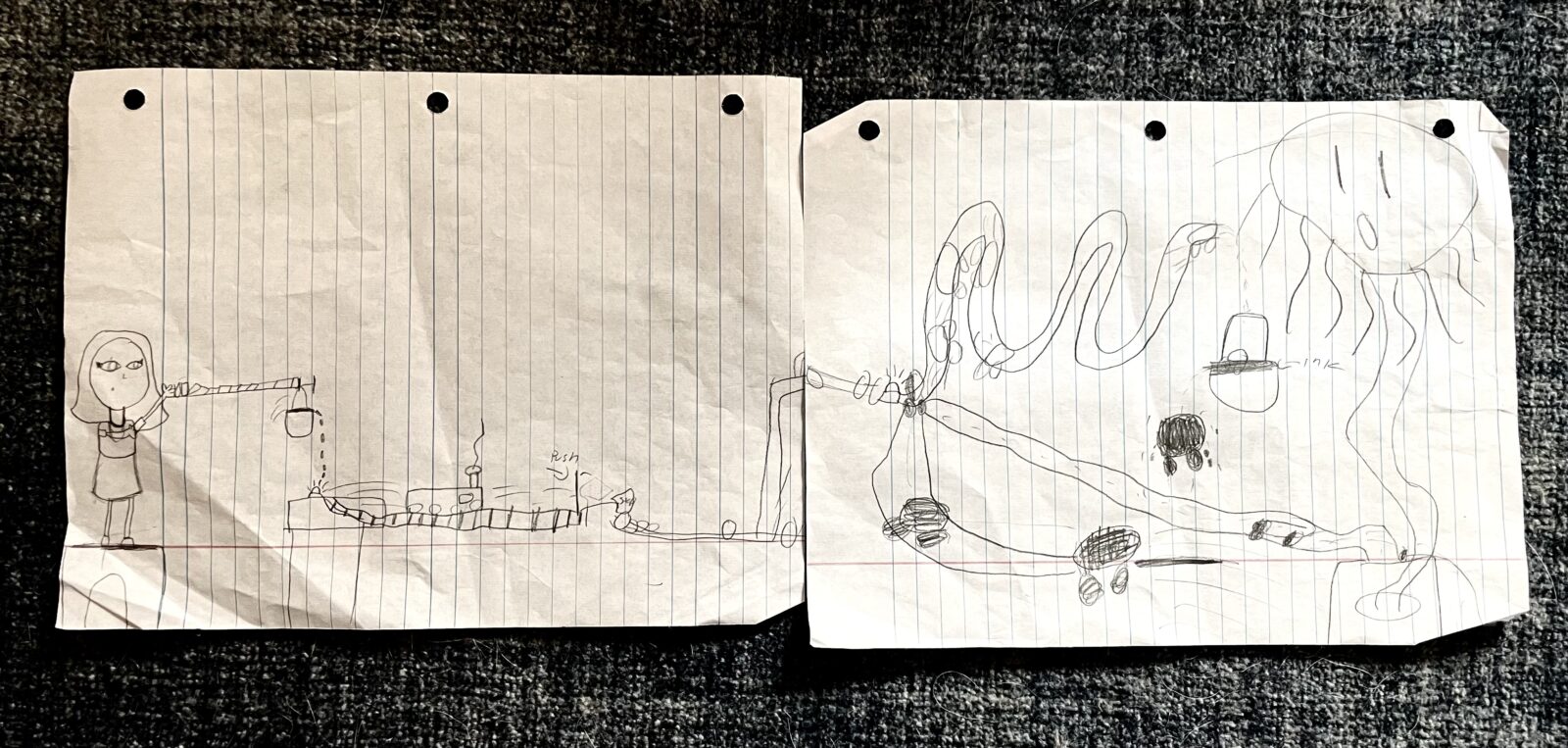
5. Fill the page (left to right) with your own drawn chain reactions-big or small, realistic or imaginary, just like Rube Goldberg!
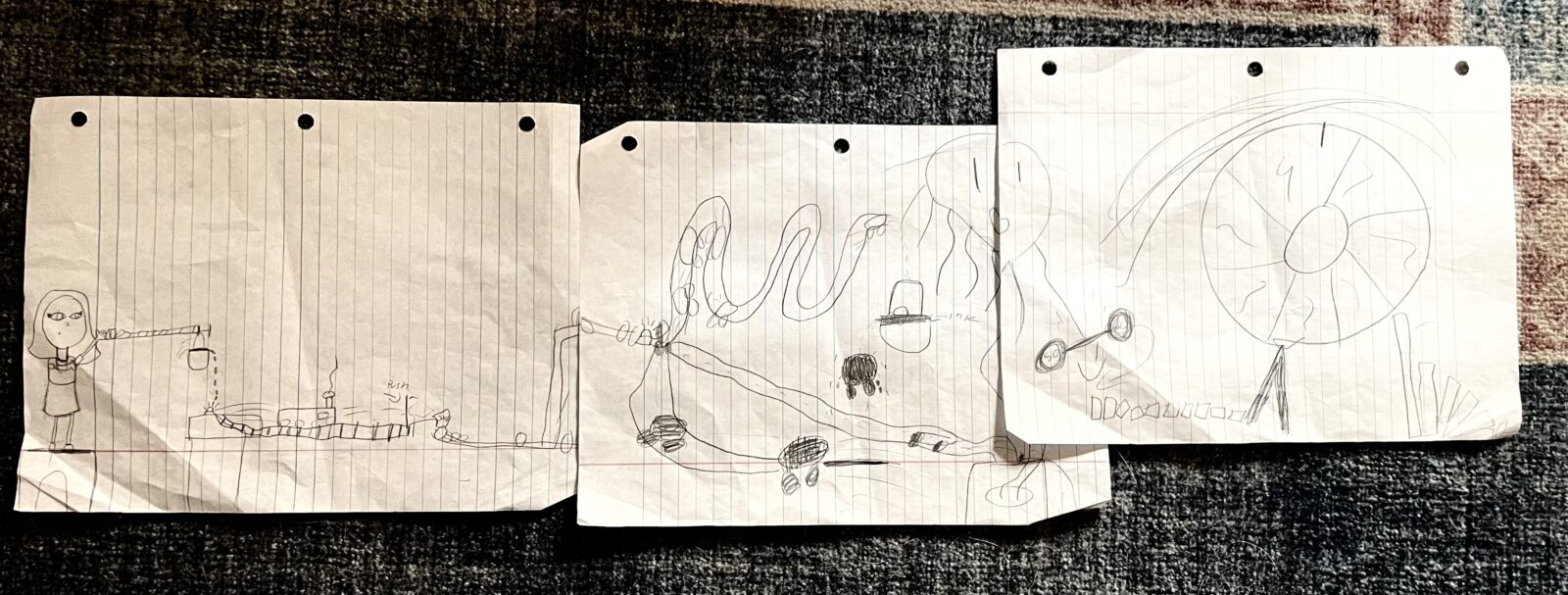
The group’s complete drawn machine can be as many pages long as the number in your group, and would make a fun hallway display or accordion book!

Tips:
- Draw as clearly as possible so it’s easy to tell what is happening at each step of your chain reaction machine.
- Plan and draw lightly at first before committing to darker lines.
- Make some marks on each side of your paper to remind you where your machine needs to “connect” to the person’s machine drawing on each side.
- Discuss and Work with your peers to decide if falling dominoes (or whatever) can leave your page and enter theirs at the connection point. And vise versa. A chain reaction machine is only “believable” if the connection points flow seamlessly from one to another.
- If your machine gets too low (ex: gravity, falling, dripping), think of something to move the action “up”. Examples: a helium balloon, a swing, a catapult, a lever, a pulley, and inclined plane, heat/fire, etc.
Have fun making Group Goldberg Machines! I’d LOVE to see what your class creates. Please send me photos or tag me in social media posts :)
